This panoramic mural was commissioned by lovers of birds and the victorian period for their historical home. Here is the development of the project designed and produced by Jenny and Dominique Antony
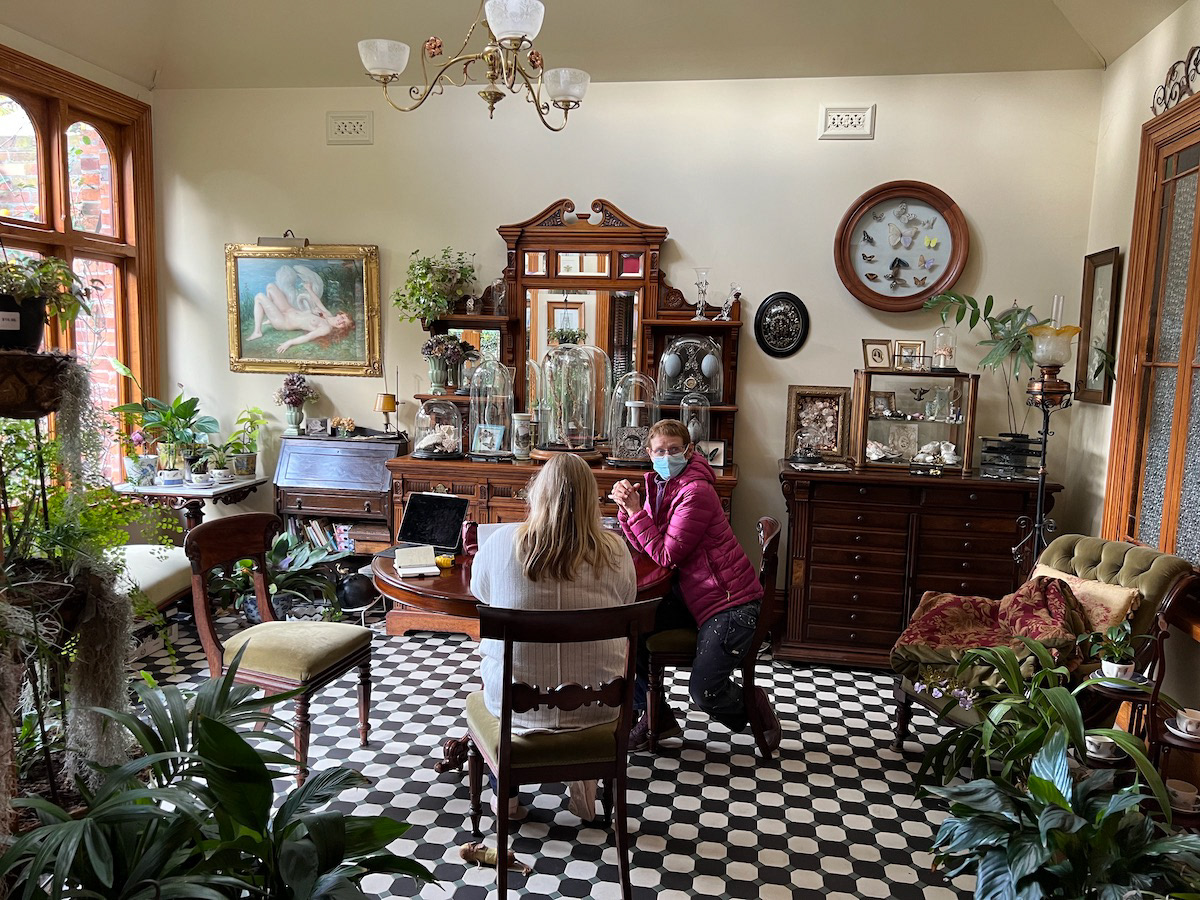
Discussion the project in the conservatory where the mural will be.
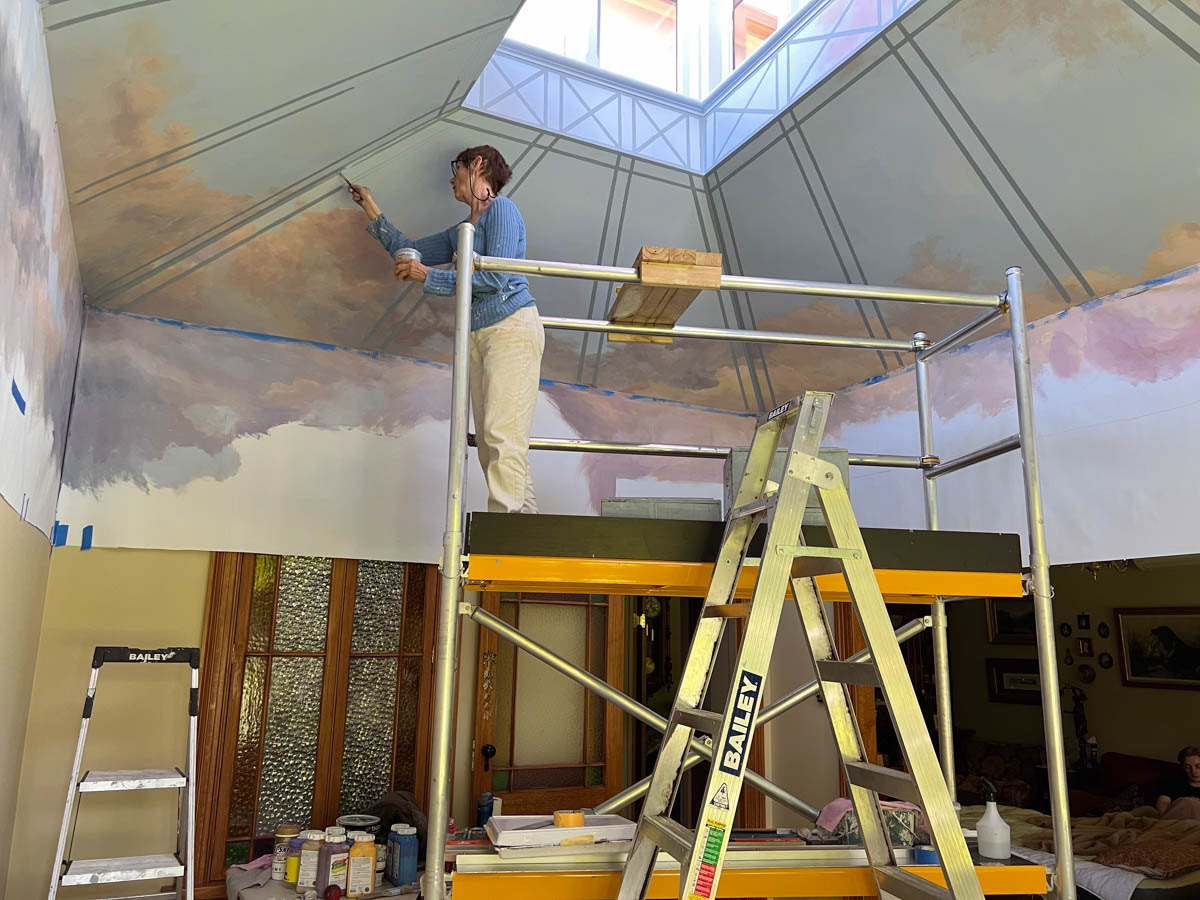
This panoramic mural was commissioned by lovers of birds and the victorian period for their historical home. Here is the development of the project designed and produced by Jenny and Dominique Antony. The following photos show the painting in the making and its completion.

The architecture of the room lent itself to the painting of a greenhouse structure or aviary in trompe l’oeil.
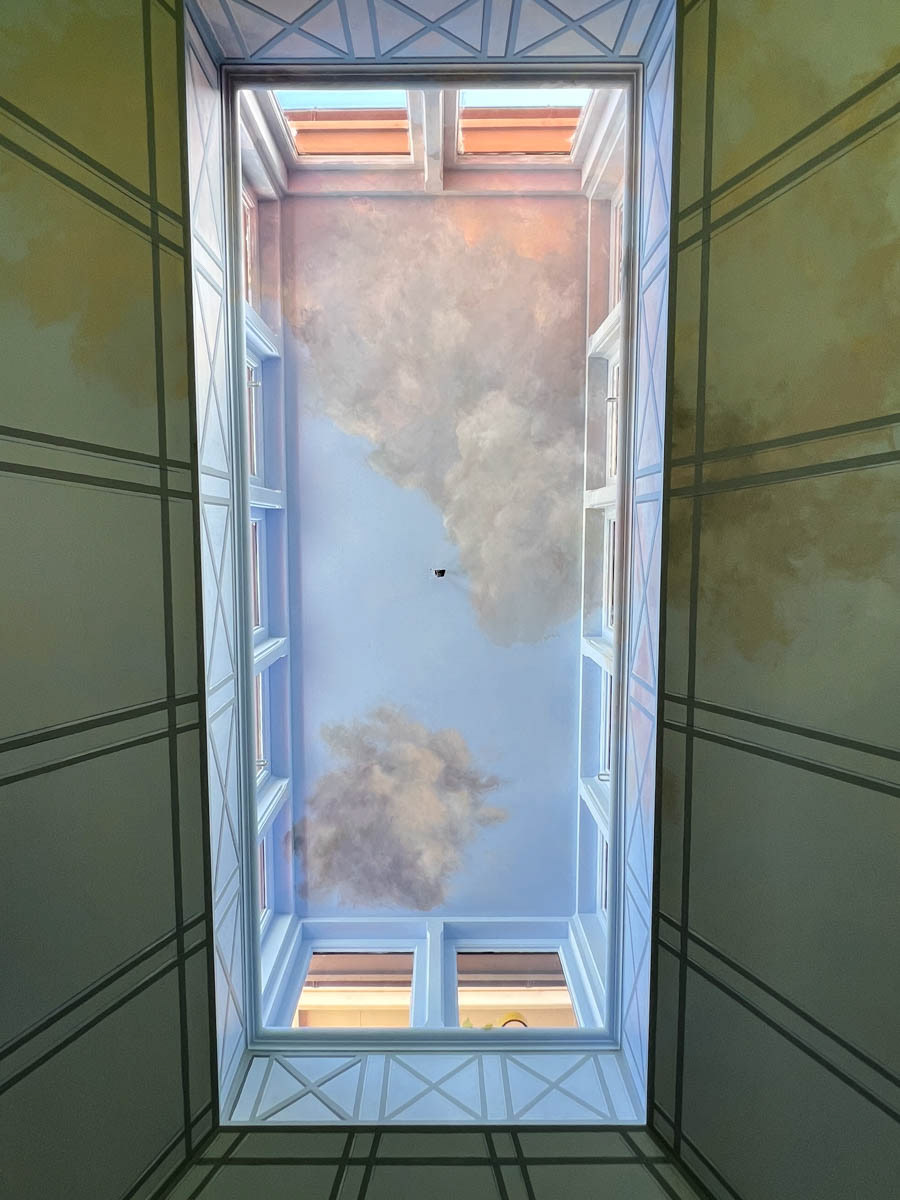
Sky, ceiling. light.
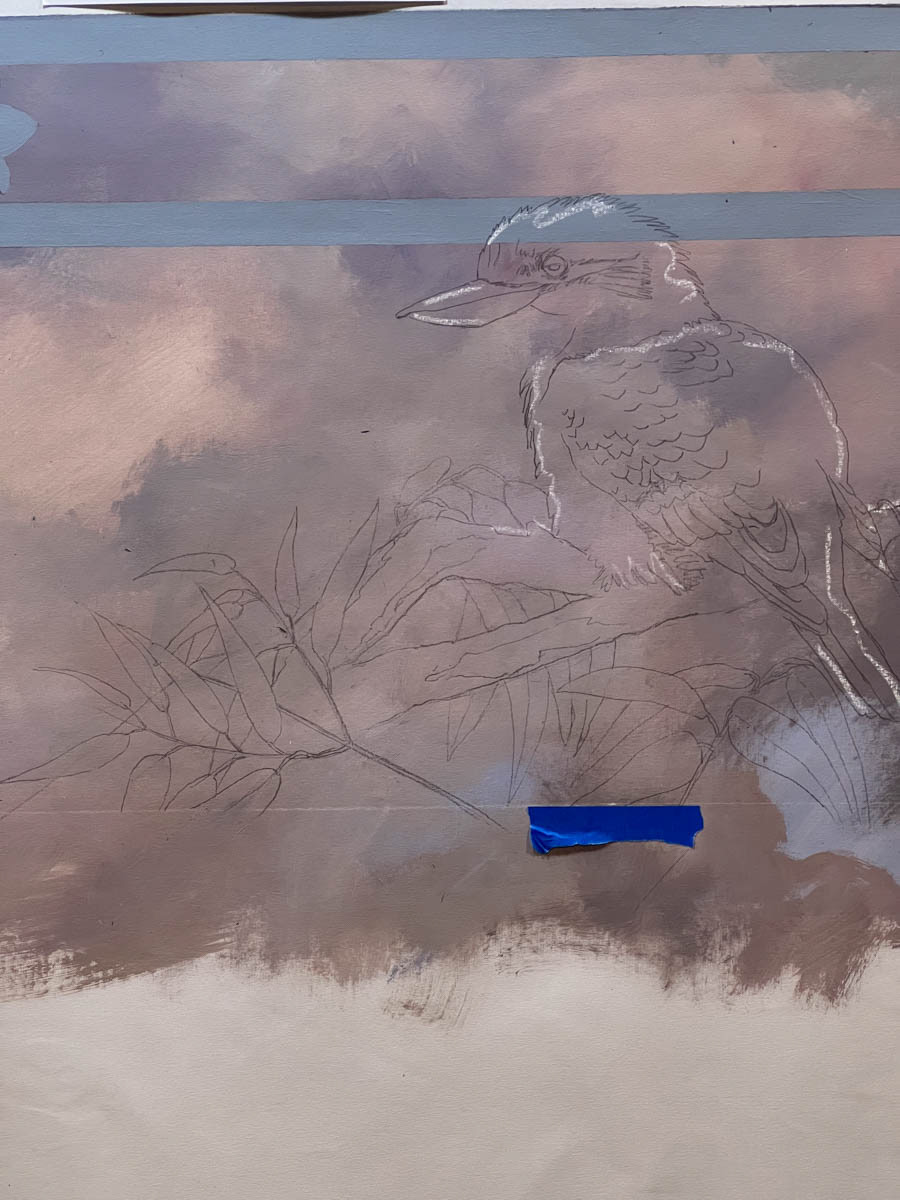
First draft, layout on the canvas.
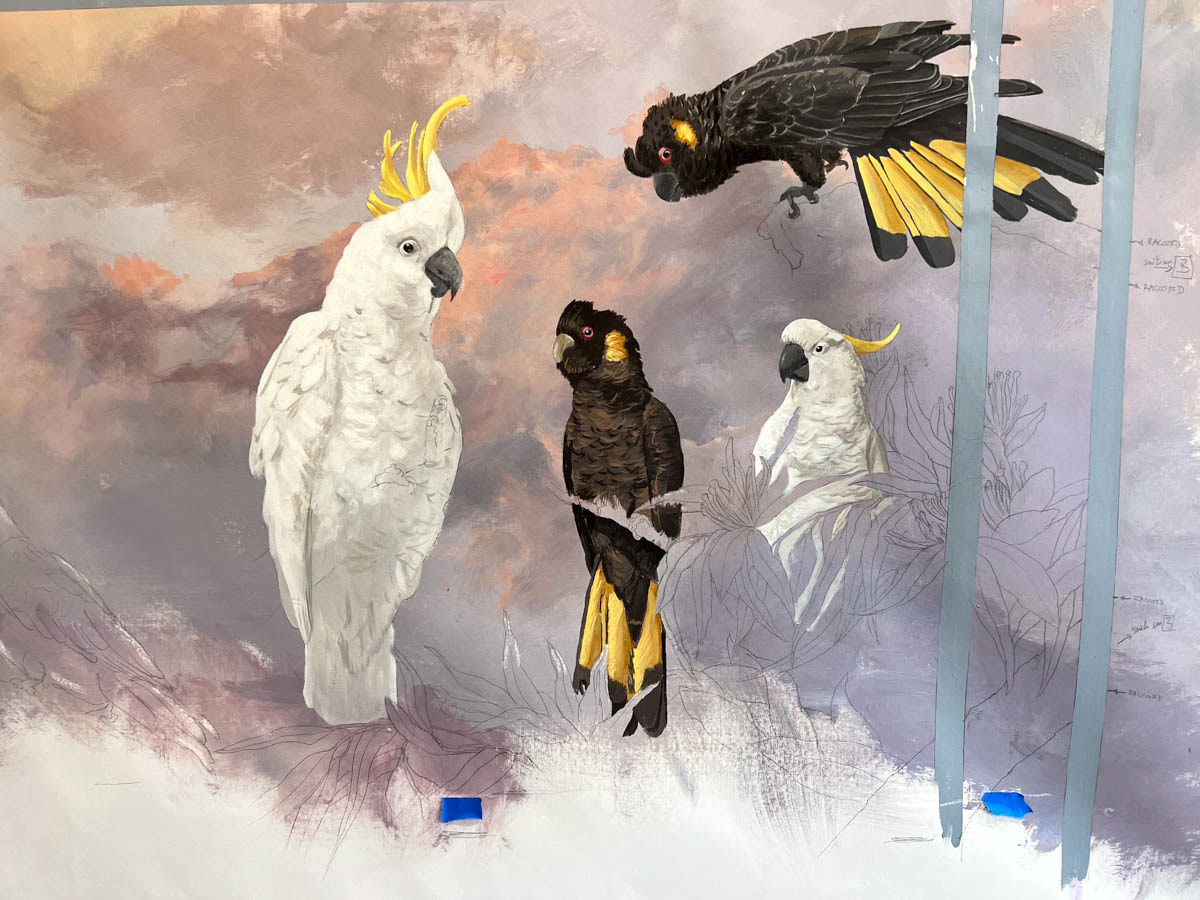
Sulfur Crested Cockatoo and Yellow Tail Black Cockatoo (Zanda funereus): Yellow Tail Black Cockatoos feed mainly on seeds and are often seen in pairs. They are able to crack open the tough shells of banksia seeds using its powerful bill.
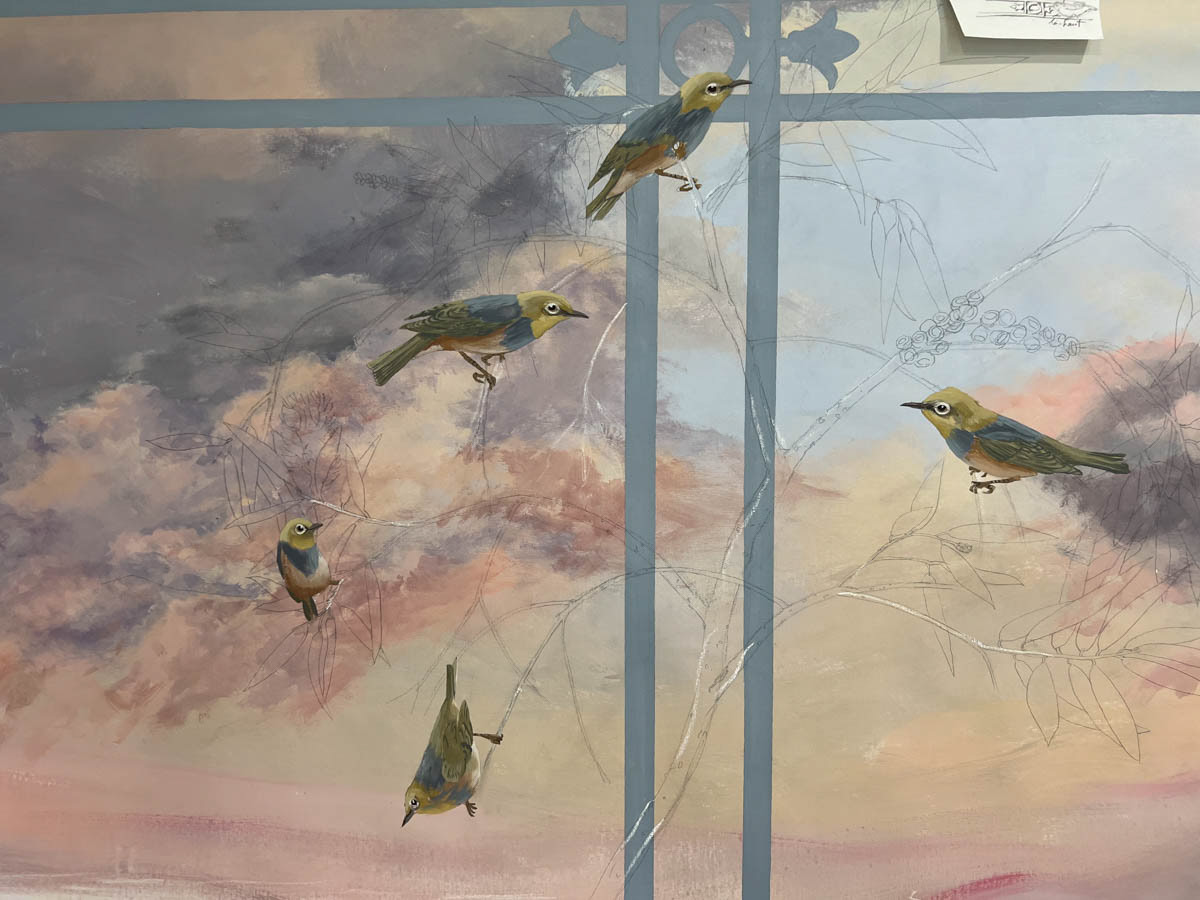
Silver Eye (Zosterops lateralis): Also called the White-eye. They feed on insects, nectar, and fruit and are known for their distinctive white eye-ring.

Silver Eye. A small bird 11 to 13 cm in length and around 10 g in weight. Top right: WILLY WAGTAIL (Rhipidura leucophrys): This small, black and white bird is found throughout Australia and is known for its distinctive tail-wagging behaviour. They feed on insects and are often seen perched on the backs of cattle, picking off insects. An interesting fact is that they are one of the few bird species that can see ultraviolet light. Bottom: MAGPIE (Cracticus tibicen): Also called the Australian Magpie, this black and white bird is found throughout Australia. They are known for their melodious songs and are often heard singing in the early morning. They are omnivorous and feed on insects, small mammals, and fruit. They are highly territorial and will defend their territory aggressively.
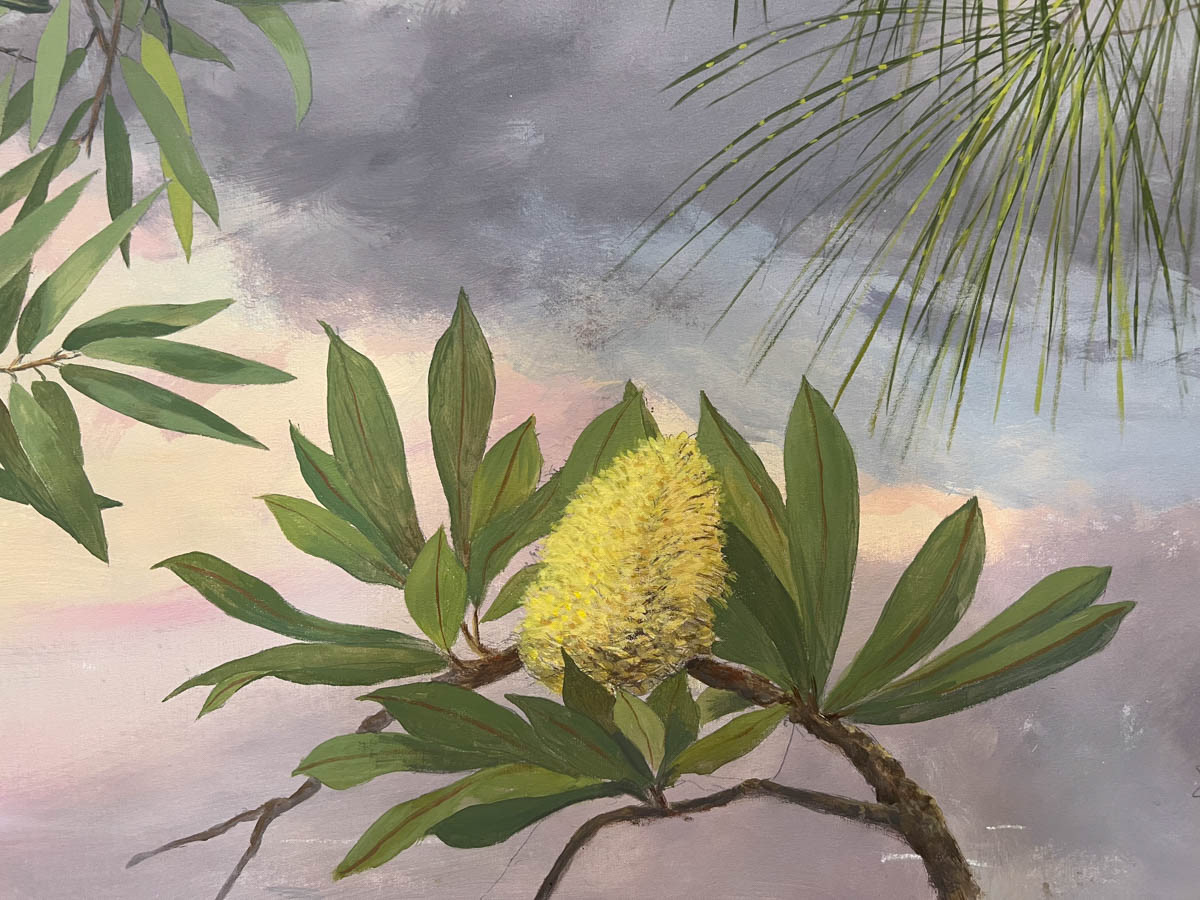
Banksia
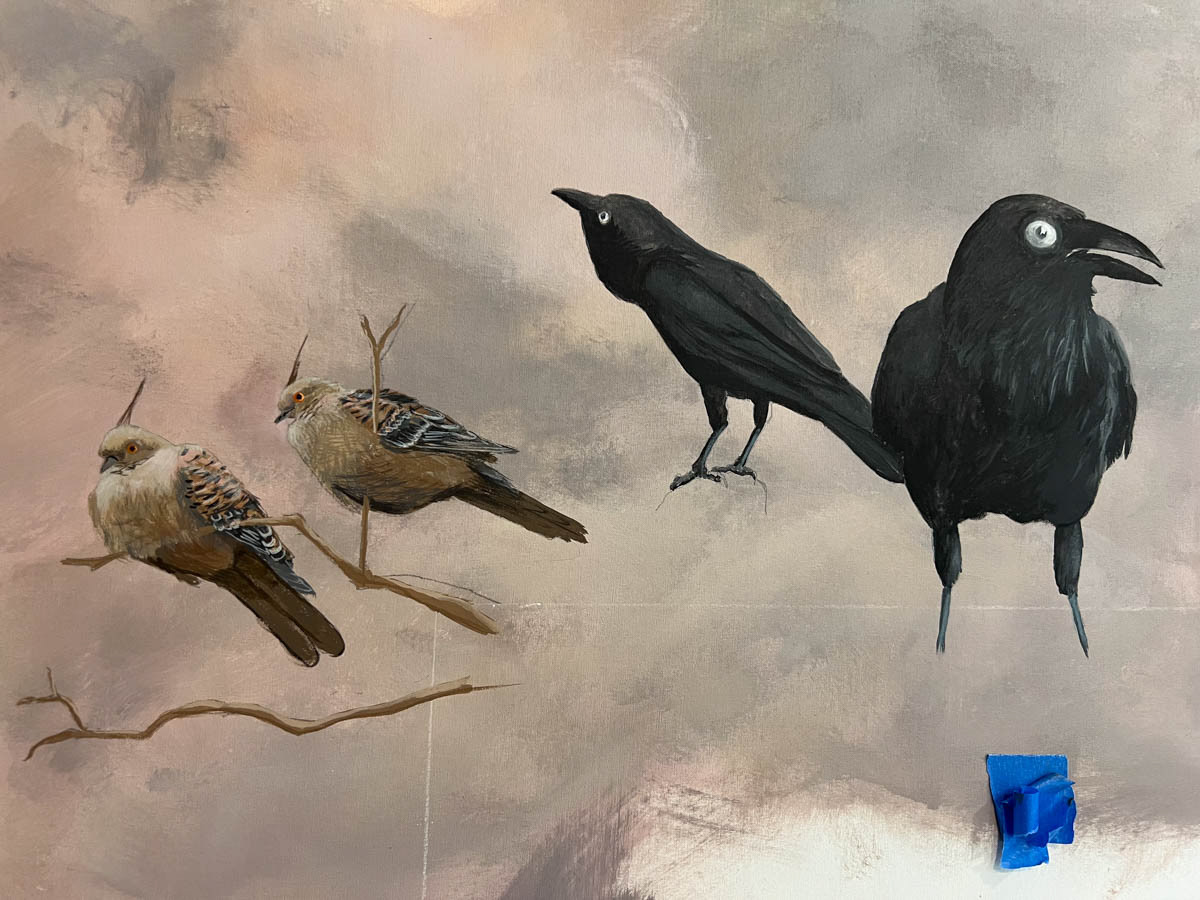
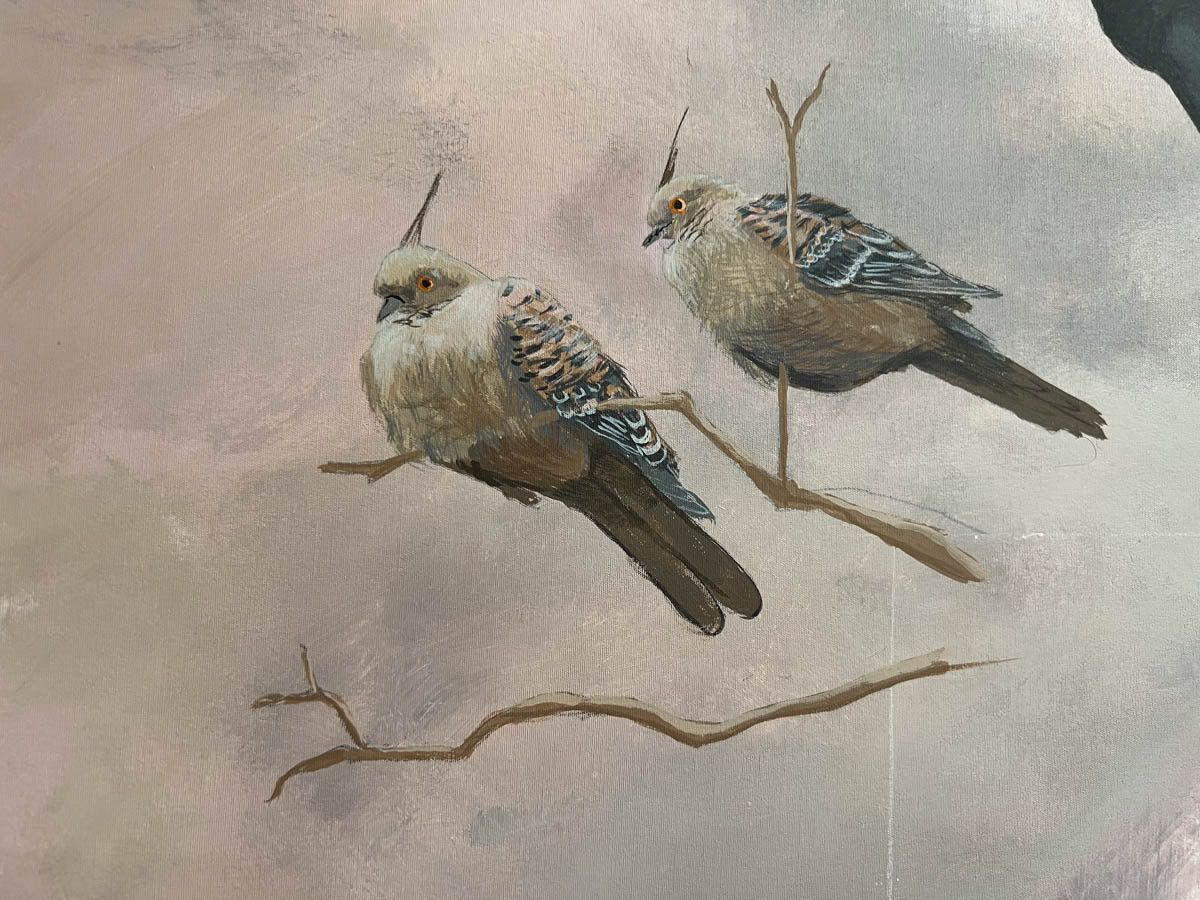
Crested Pigeon (Ocyphaps lophotes)
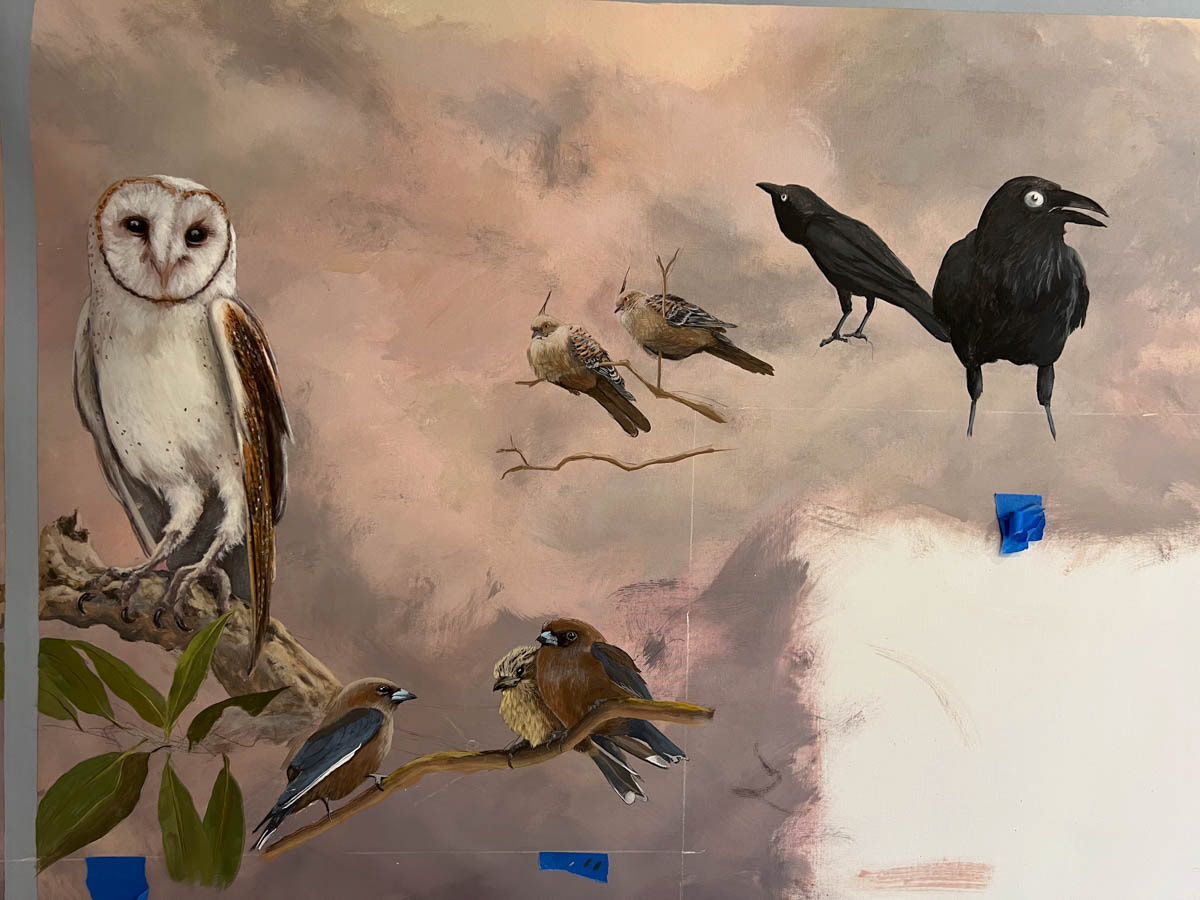
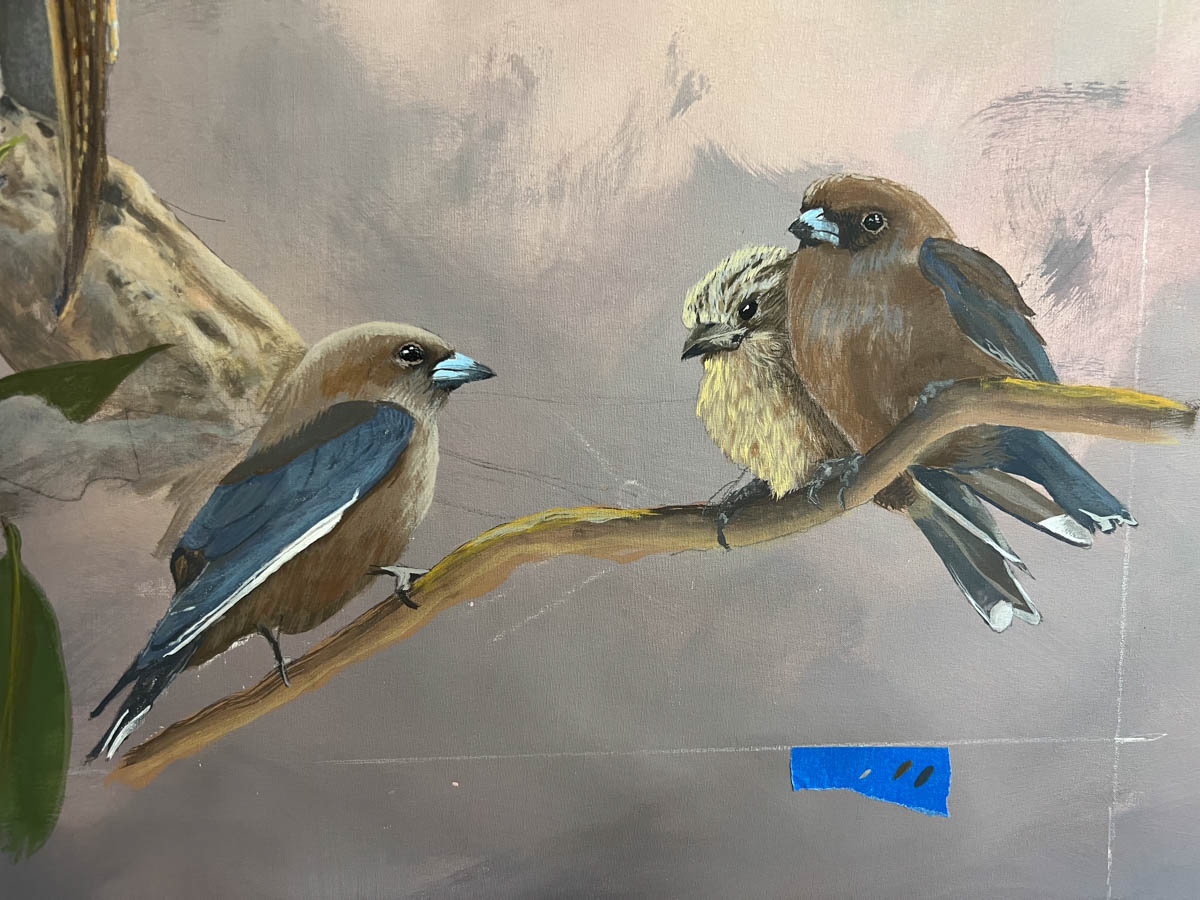
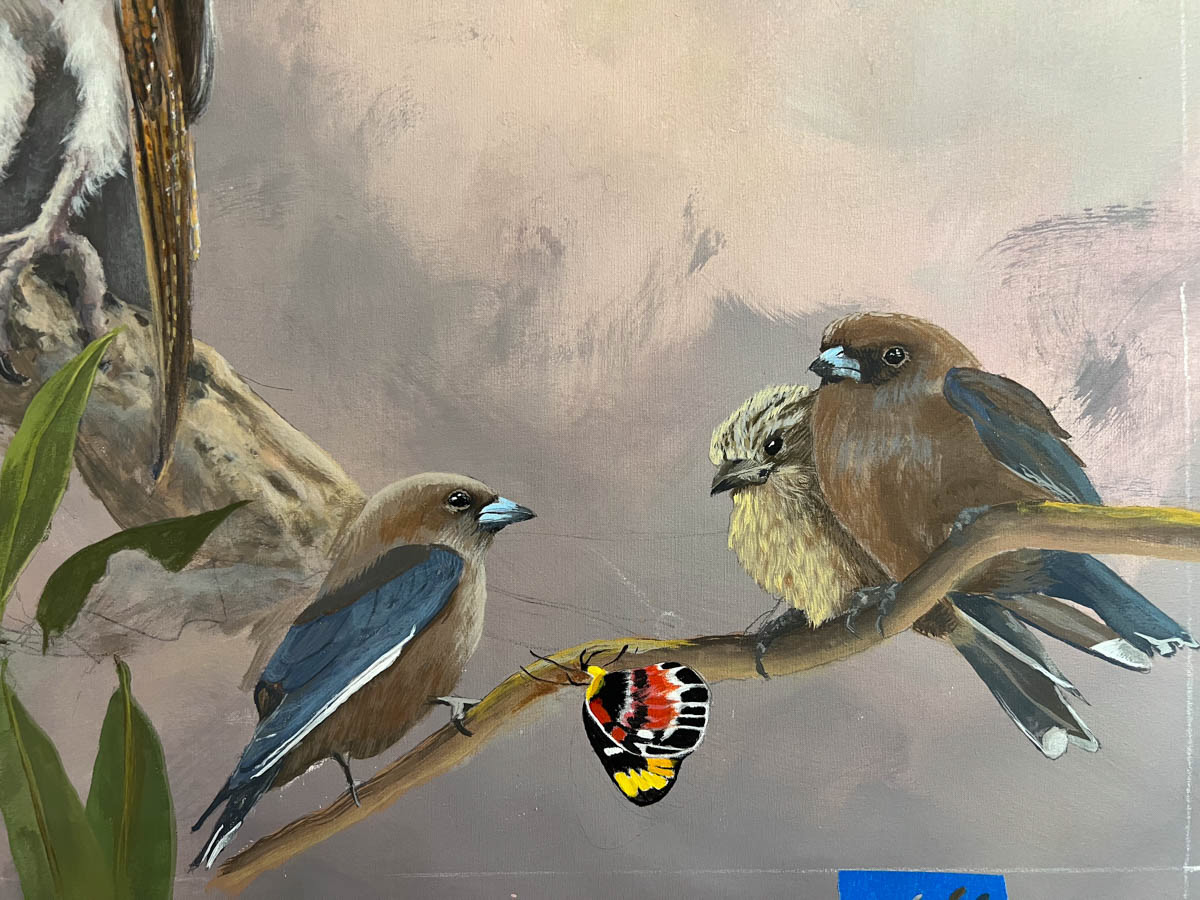

The sacred kingfisher (Todiramphus sanctus)
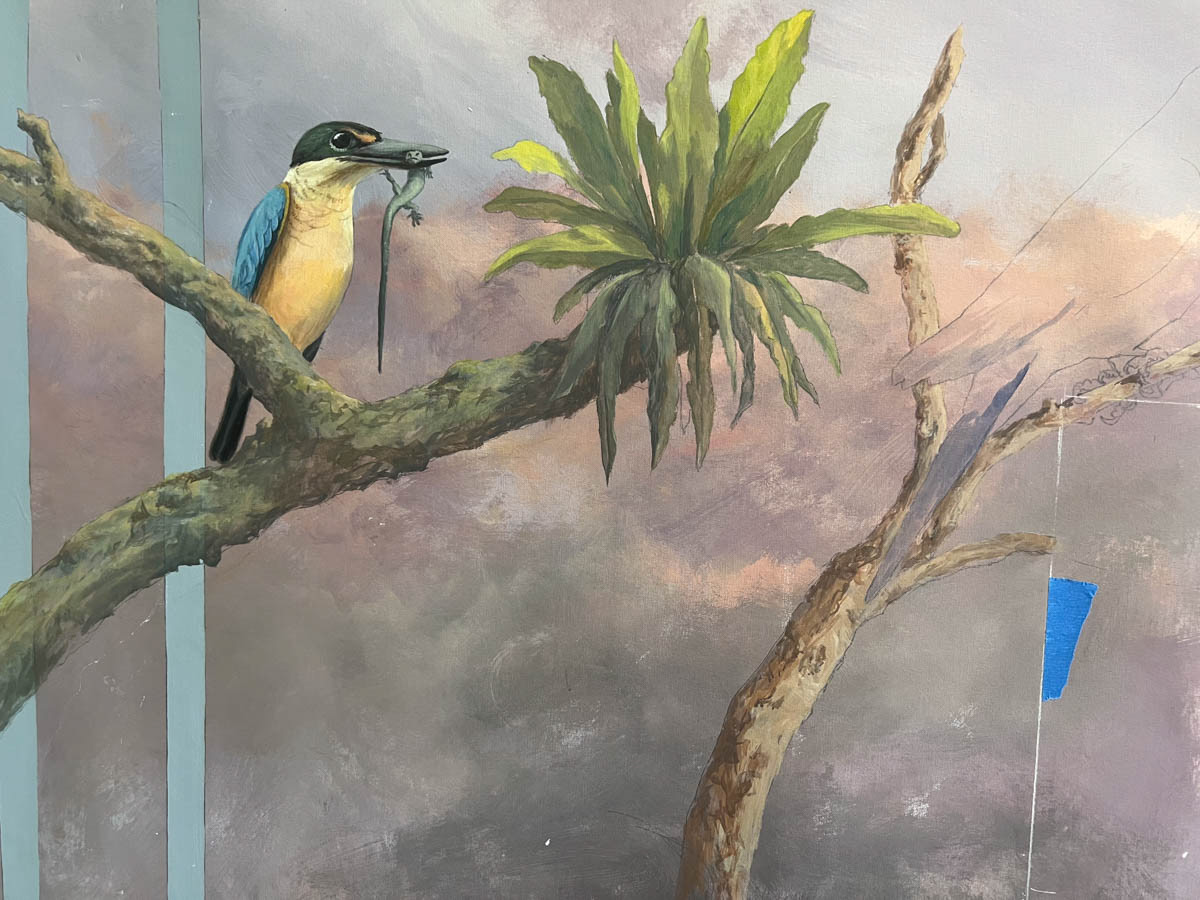
Work in progress
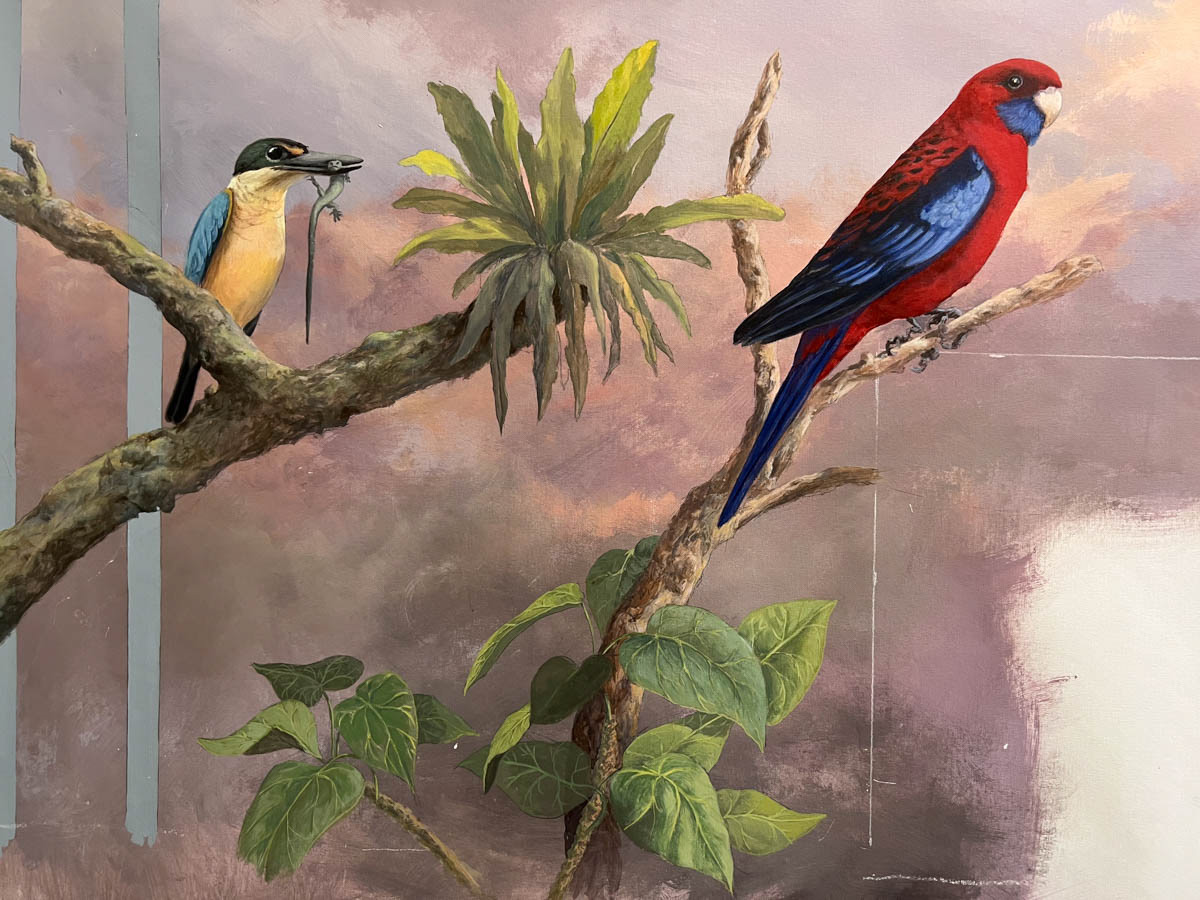
Crimson Rosella (Platycercus elegans) They typically inhabit open woodland areas and feed on seeds, fruit, and insects. It has been observed engaging in anting behavior, where they rub ants onto their feathers, possibly to rid themselves of parasites or to gain some other benefit from the ant secretions.
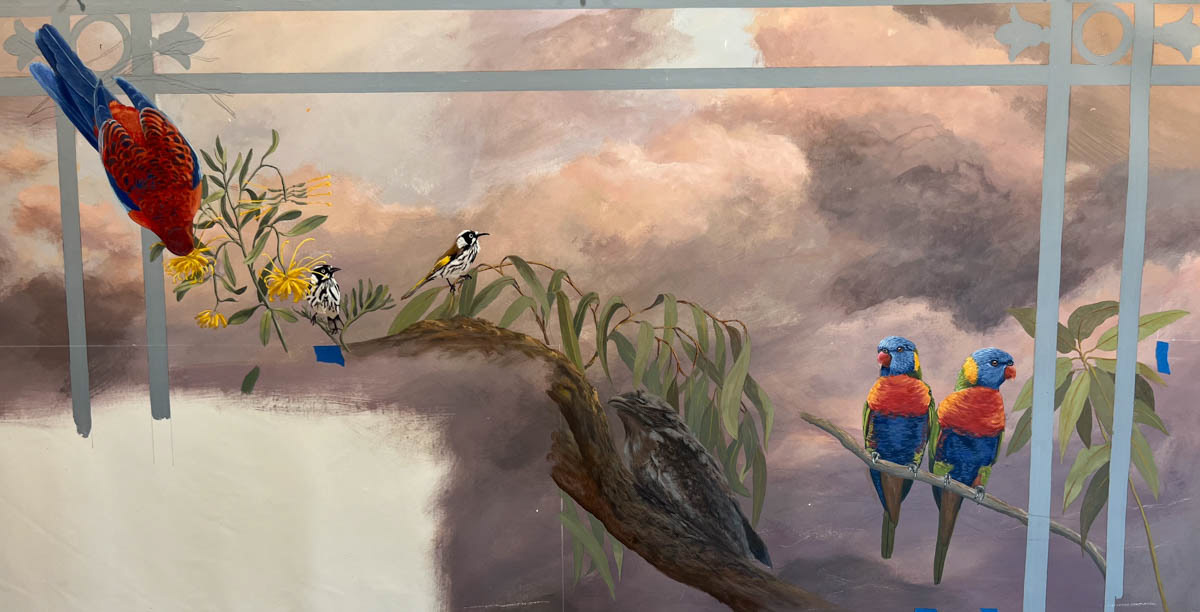
Crimson Rosella, New holland honeyeater (Phylidonyris novaehollandiae): They feed primarily on nectar and insects and are often seen flitting among flowers in gardens and parks. They feed on the sweet, sugary secretions of scale insects, which they extract by piercing the insect's body with their bill. The Tawny Frogmouth well hidden and two Rainbow Lorikeets

Panoramic view
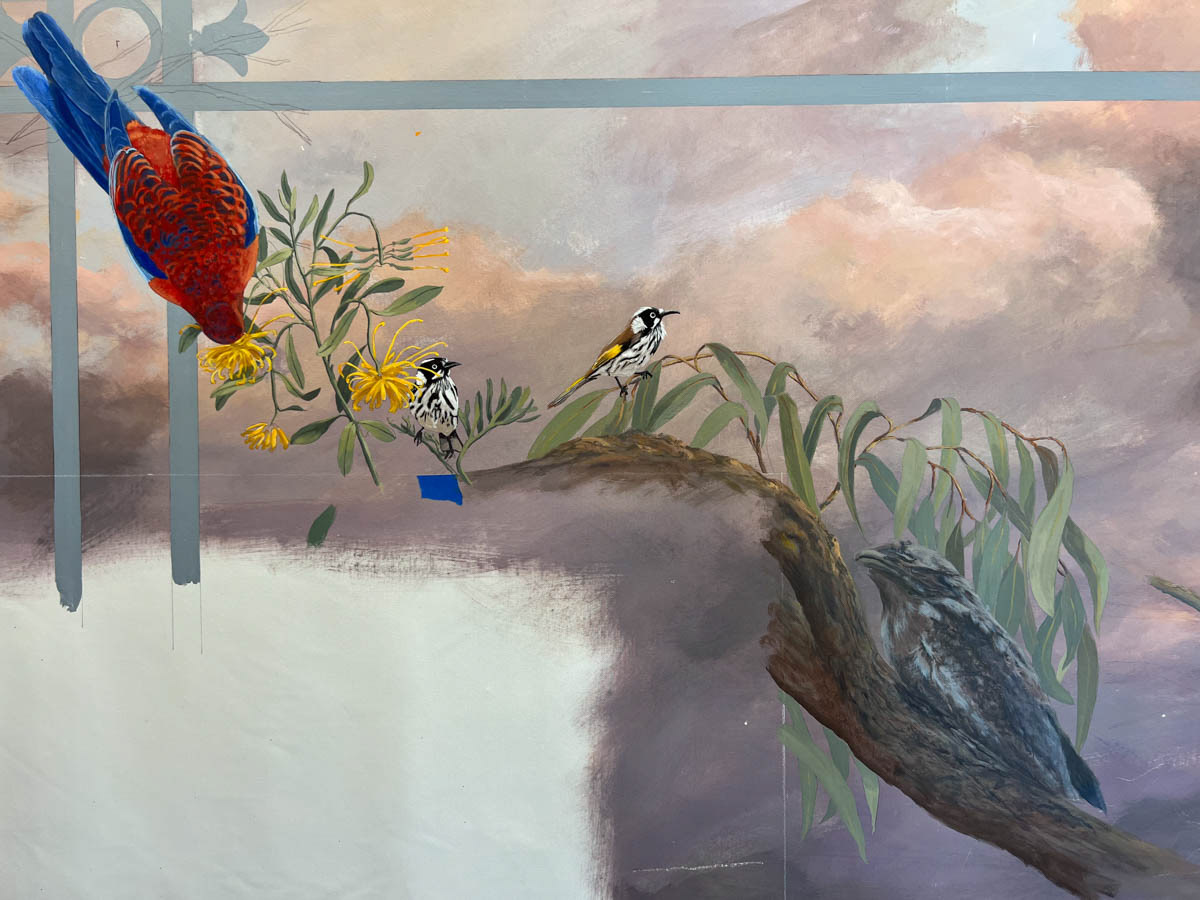
On the right, Tawny Frogmouth (Podargus strigoides): Nocturnal bird, its camouflaged plumage helps it blend in with the surrounding bark and branches of trees. They are known for their distinctive, booming calls.
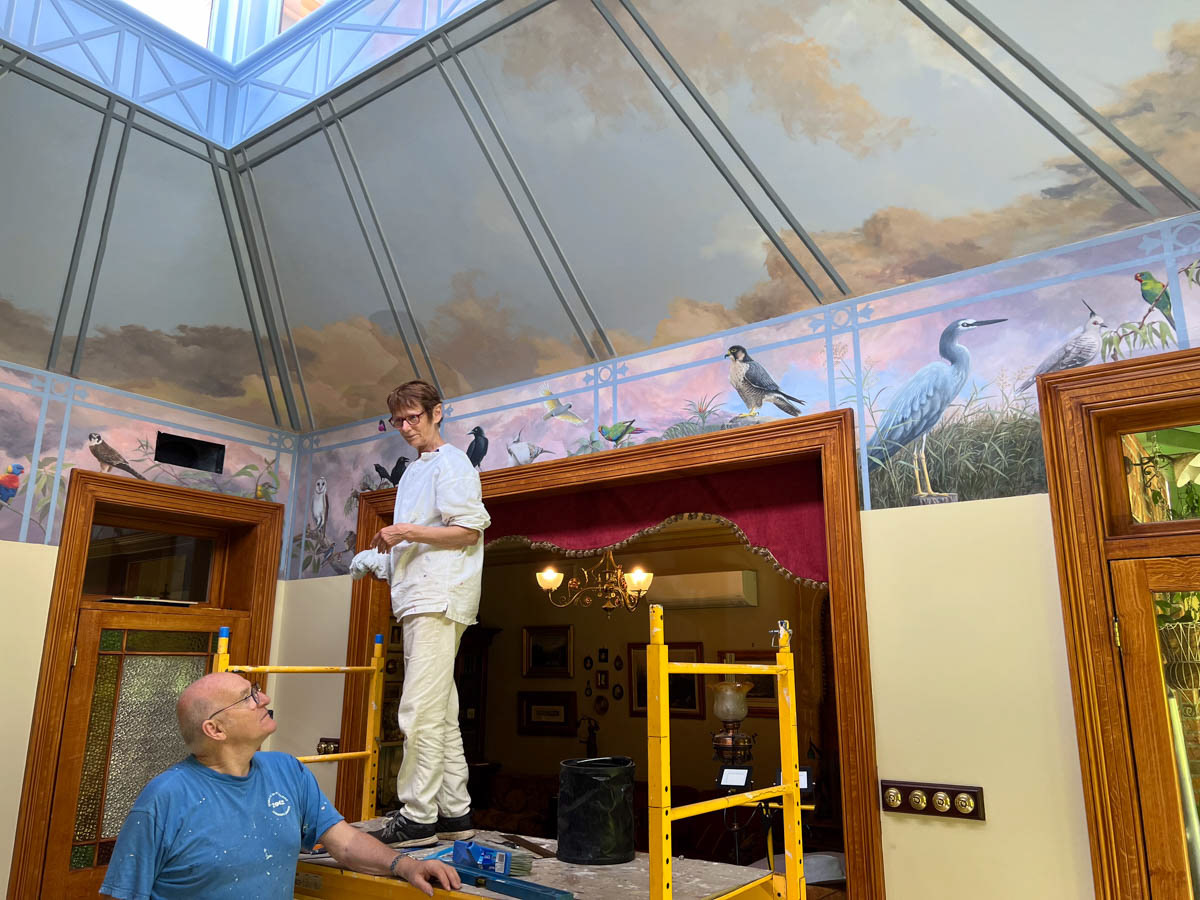
Dominique and Jenny on site
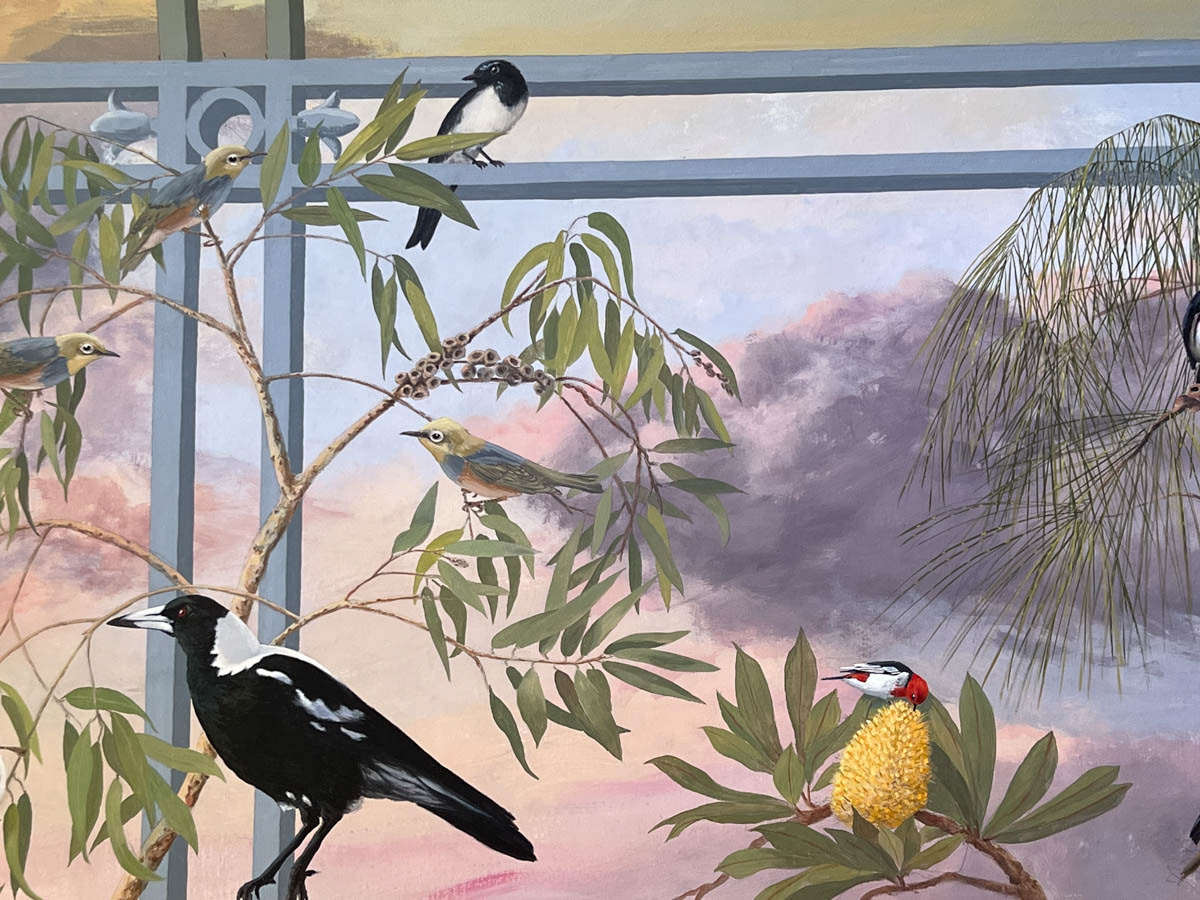
Magpie (Cracticus tibicen) , Willy Wagtail (Rhipidura leucophrys), Silver Eye and Scarlet Honey Eater on a banksia
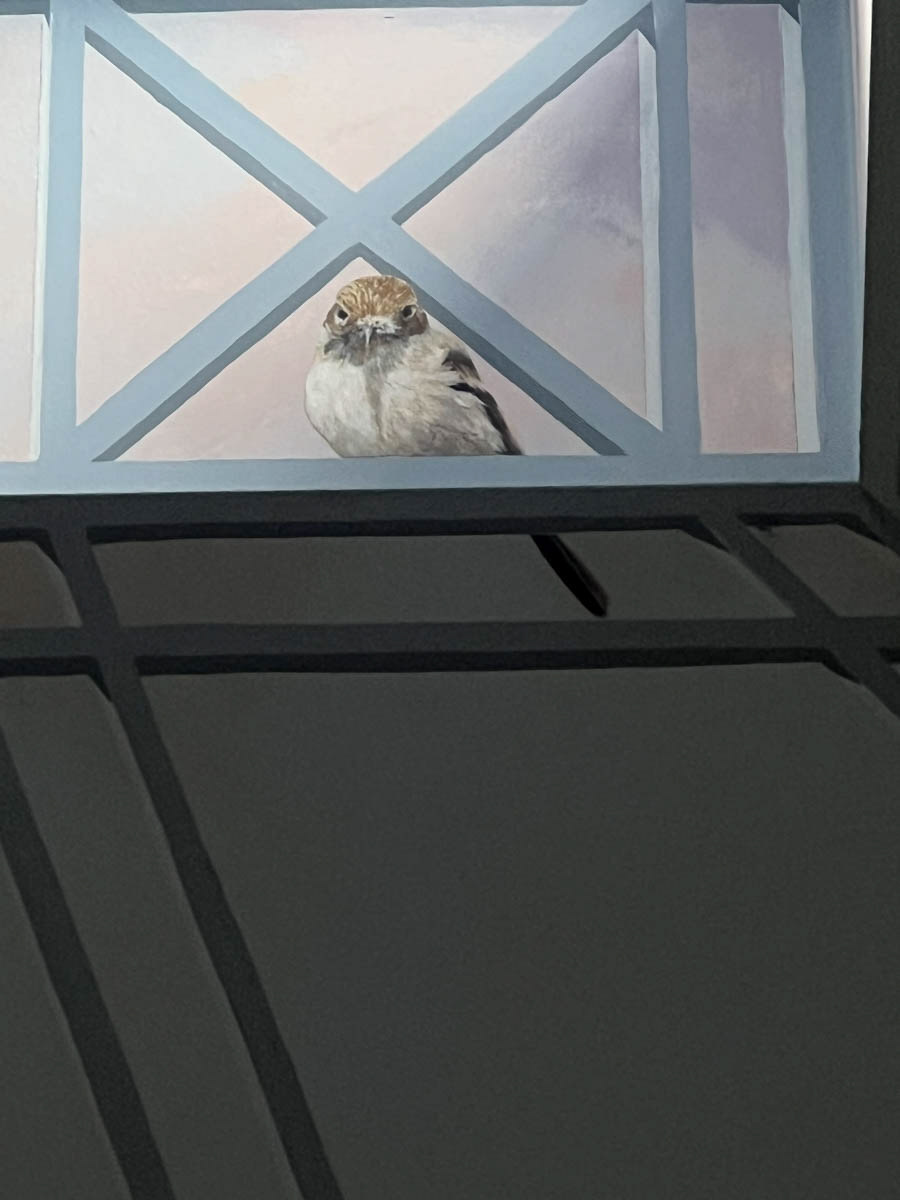
Jacky Winter (Microeca fascinans) - Jacky winters are small birds found in woodlands and forests across Australia. They are known for their distinctive call, which sounds like the word "tseet". Jacky winters feed mainly on insects, but will also eat spiders and small vertebrates. They are known to be territorial and will defend their territory vigorously. Jacky winters are also known for their courtship behavior, which includes a display of fluttering wings and tail feathers.
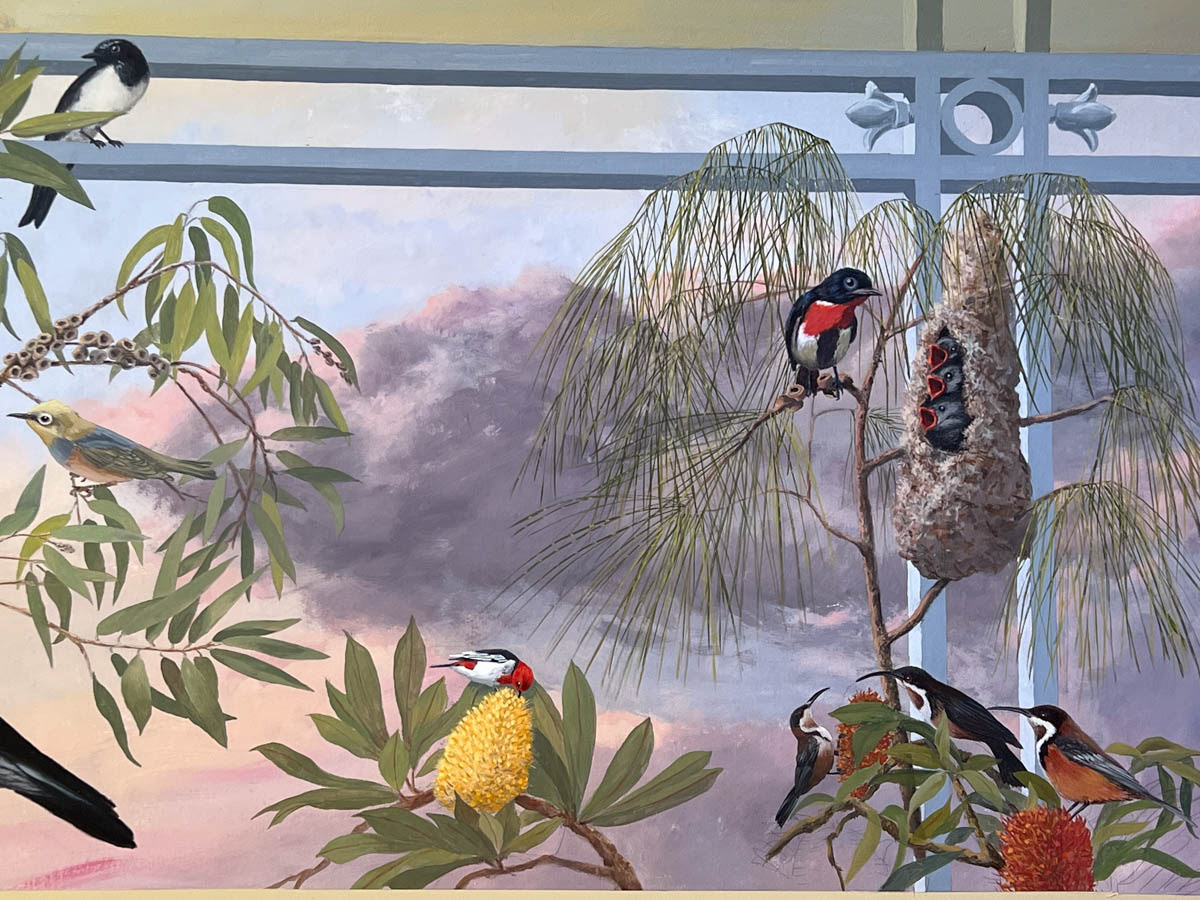
Mistletoe Bird (Dicaeum hirundinaceum) feeding and nesting in a wo

Phascogale, carnivorous Australian marsupials of the family Dasyuridae the only mamal in the painting...
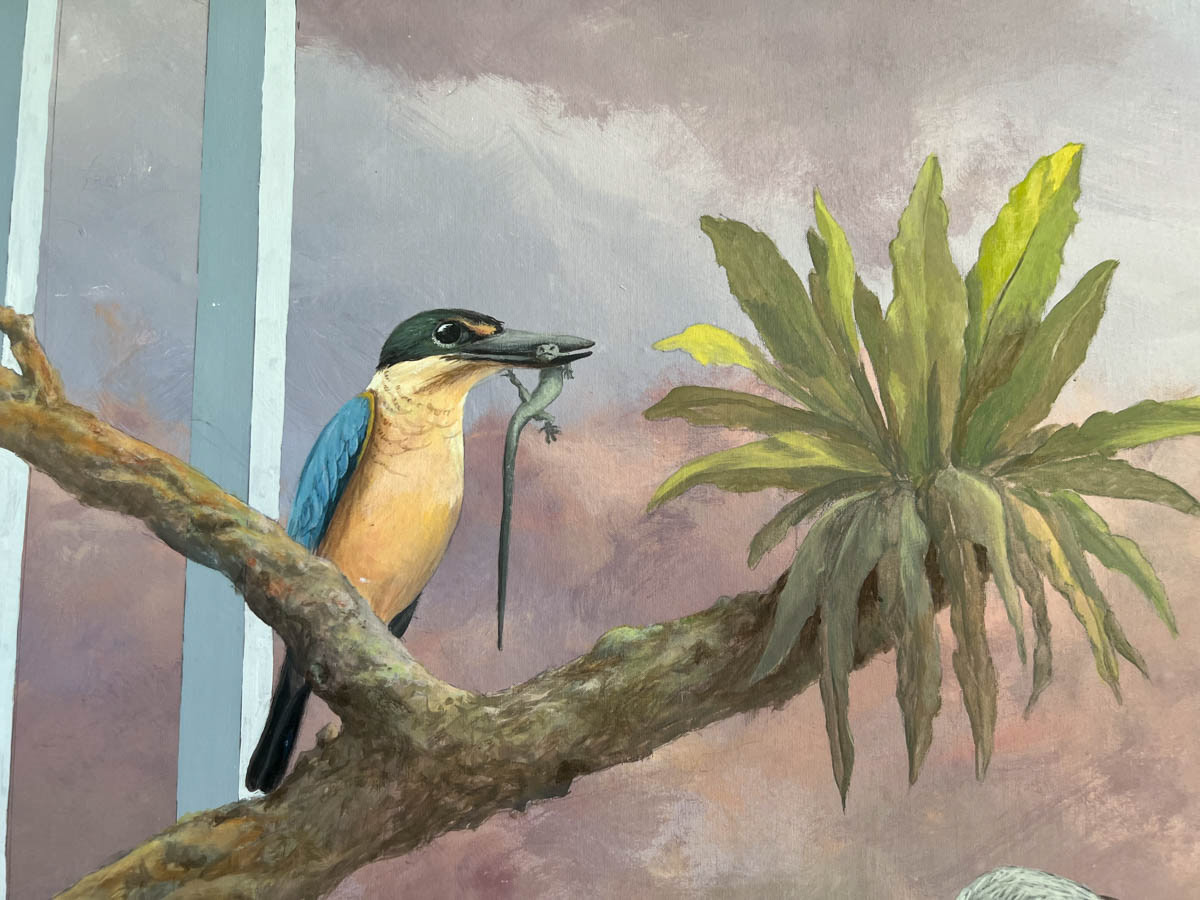
Sacred Kingfisher (Todiramphus sanctus)
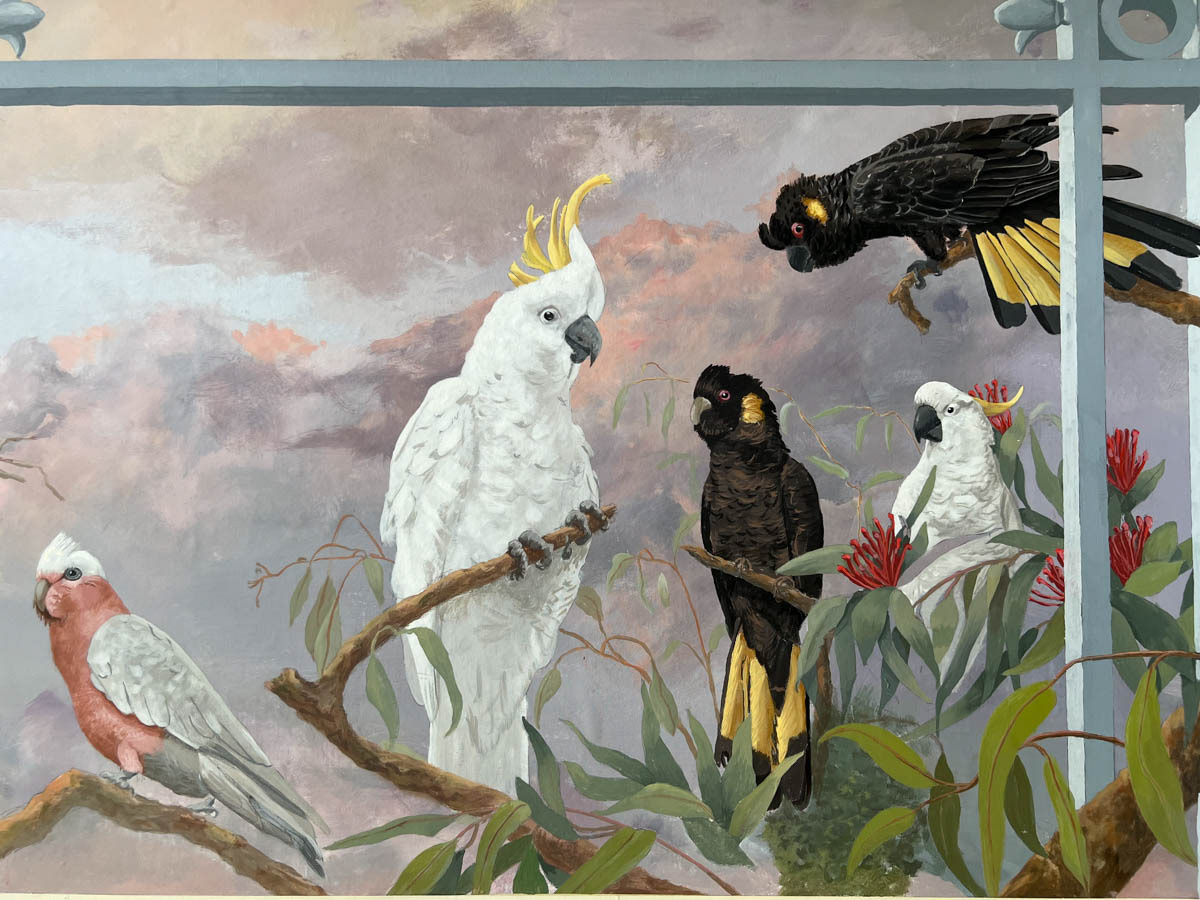
Galah, Sulphur-crested Cockatoo and Yellow-tailed black Cockatoo
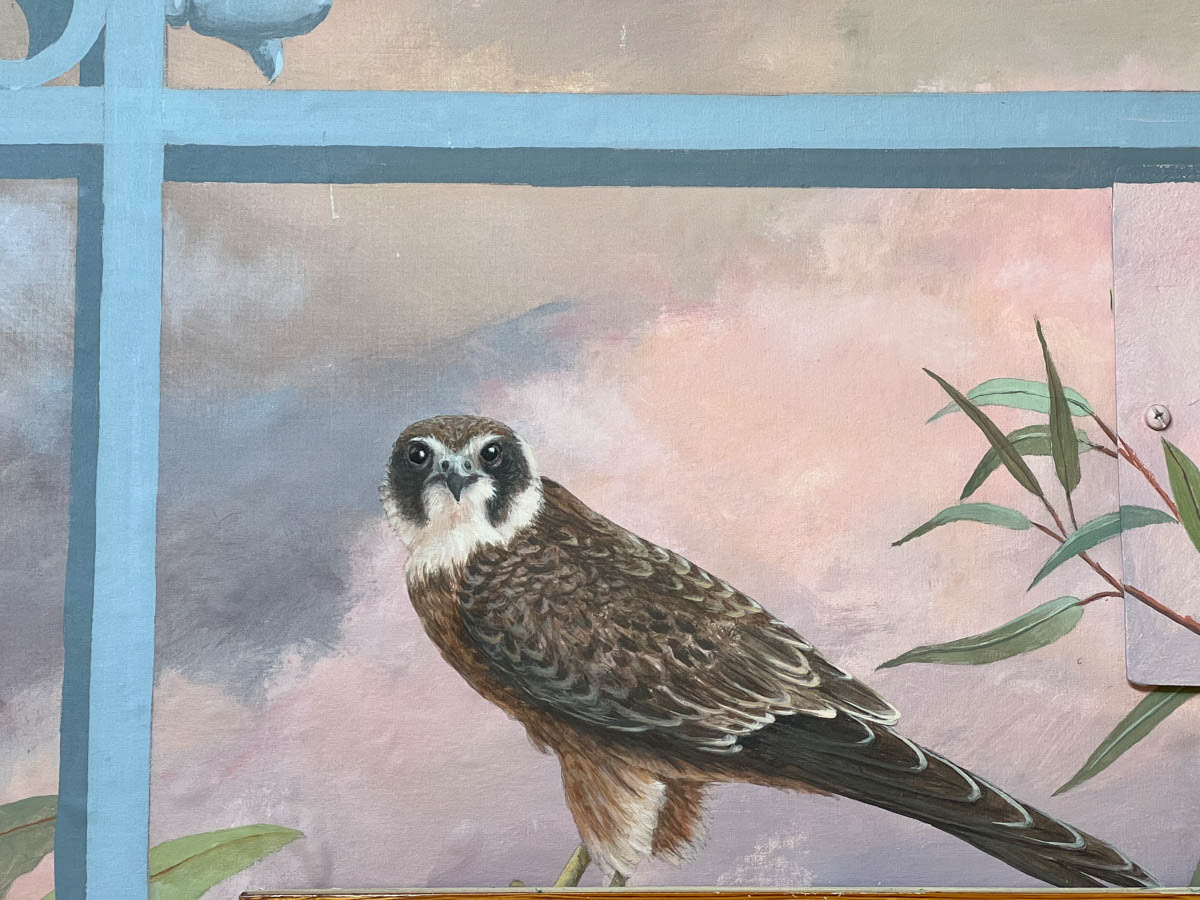
Aaustralian Hobby (Falco longipennis)
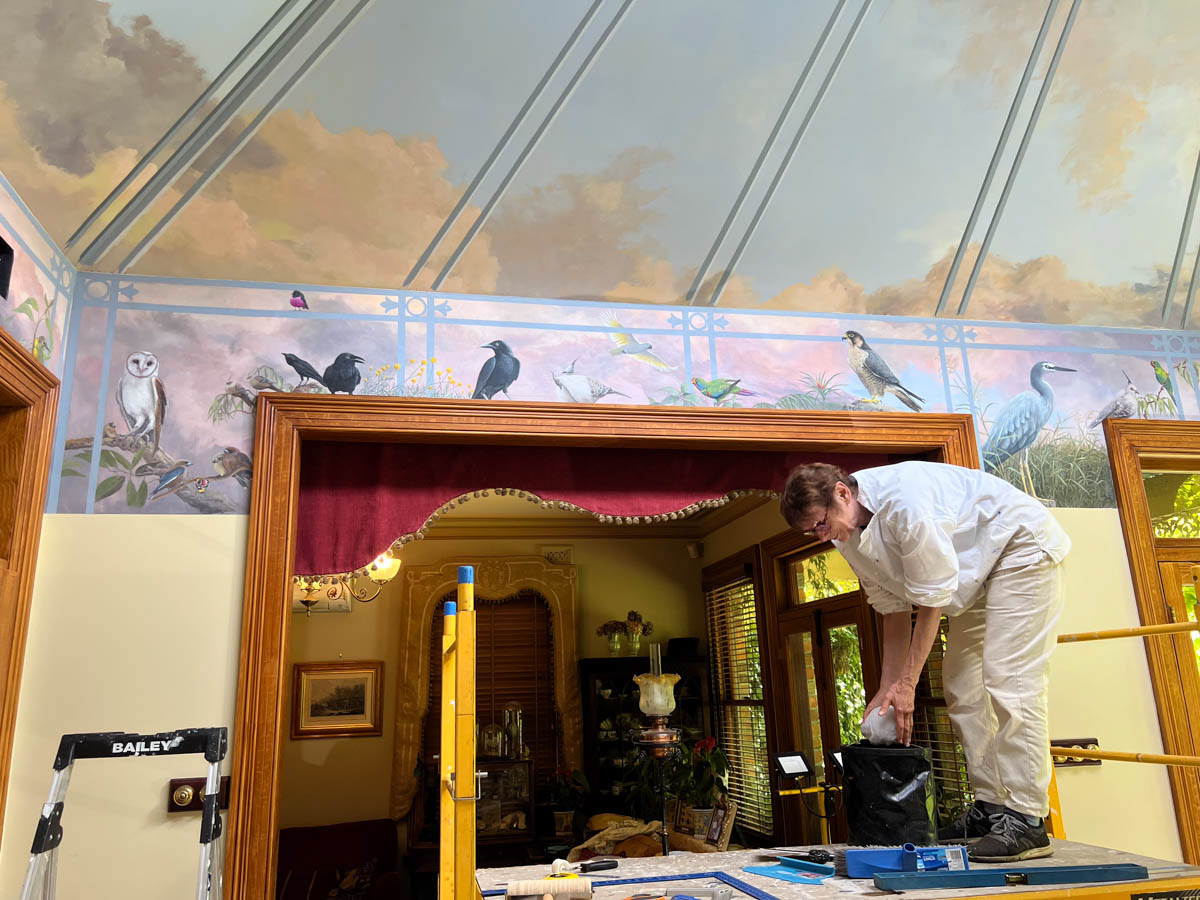
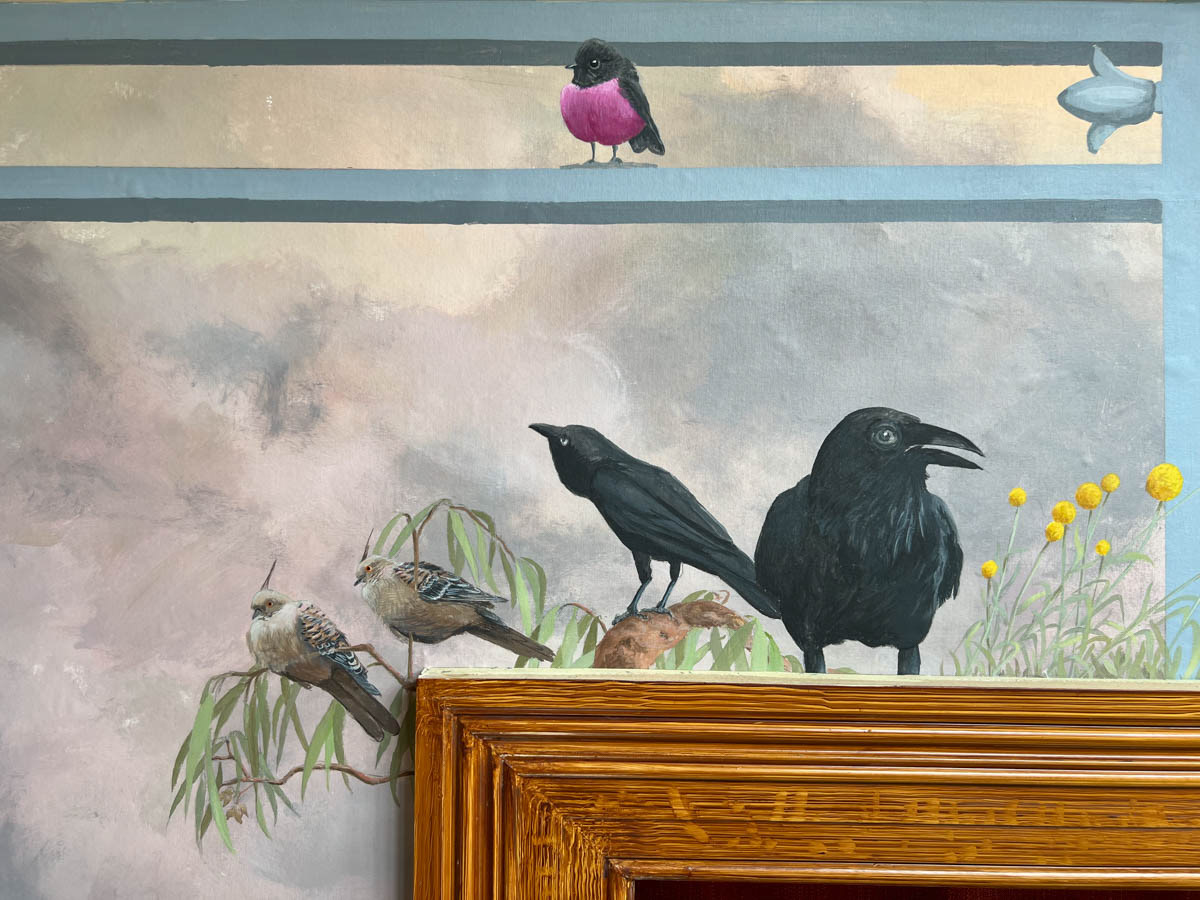
Crested Pigeon (Ocyphaps lophotes) and Australian Raven (Corvus coronoides)
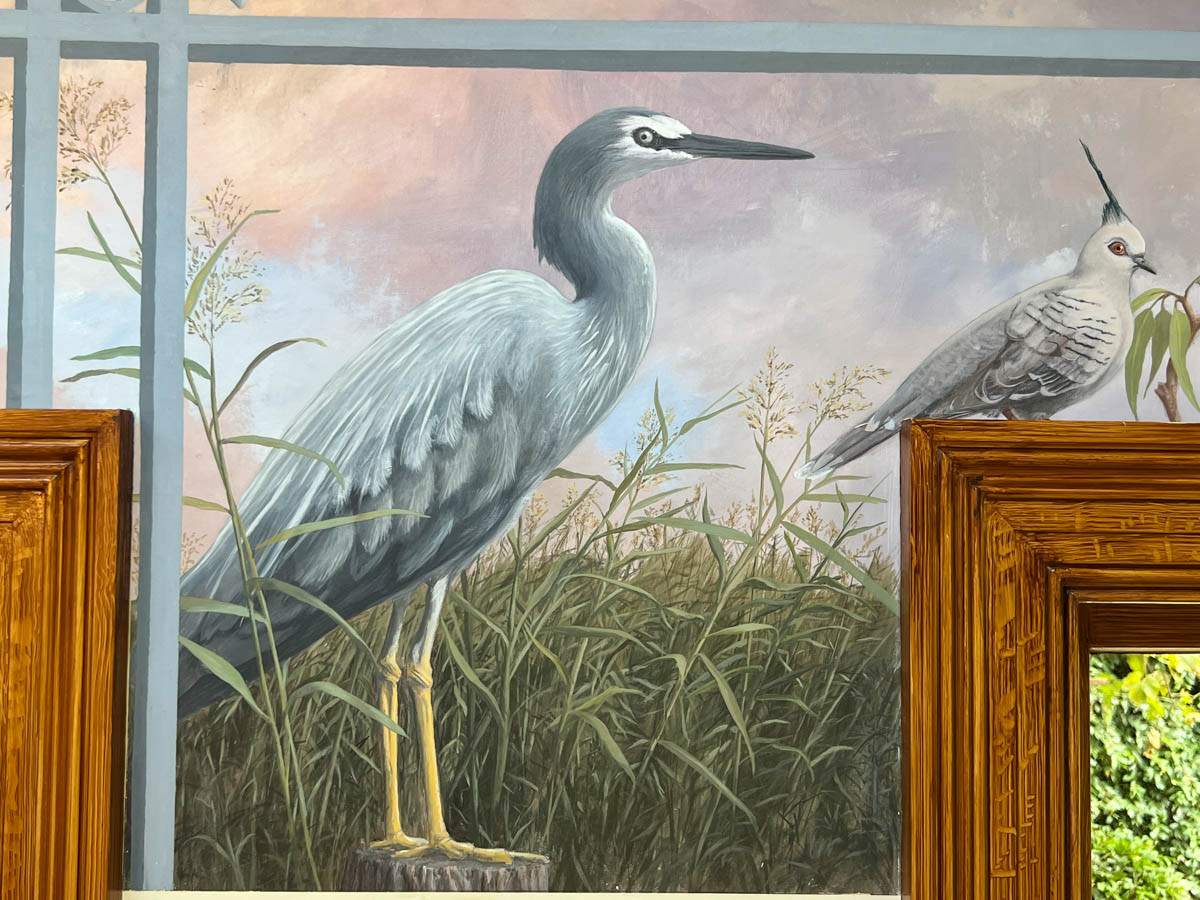
White faced Heron (Egretta novaehollandiae)
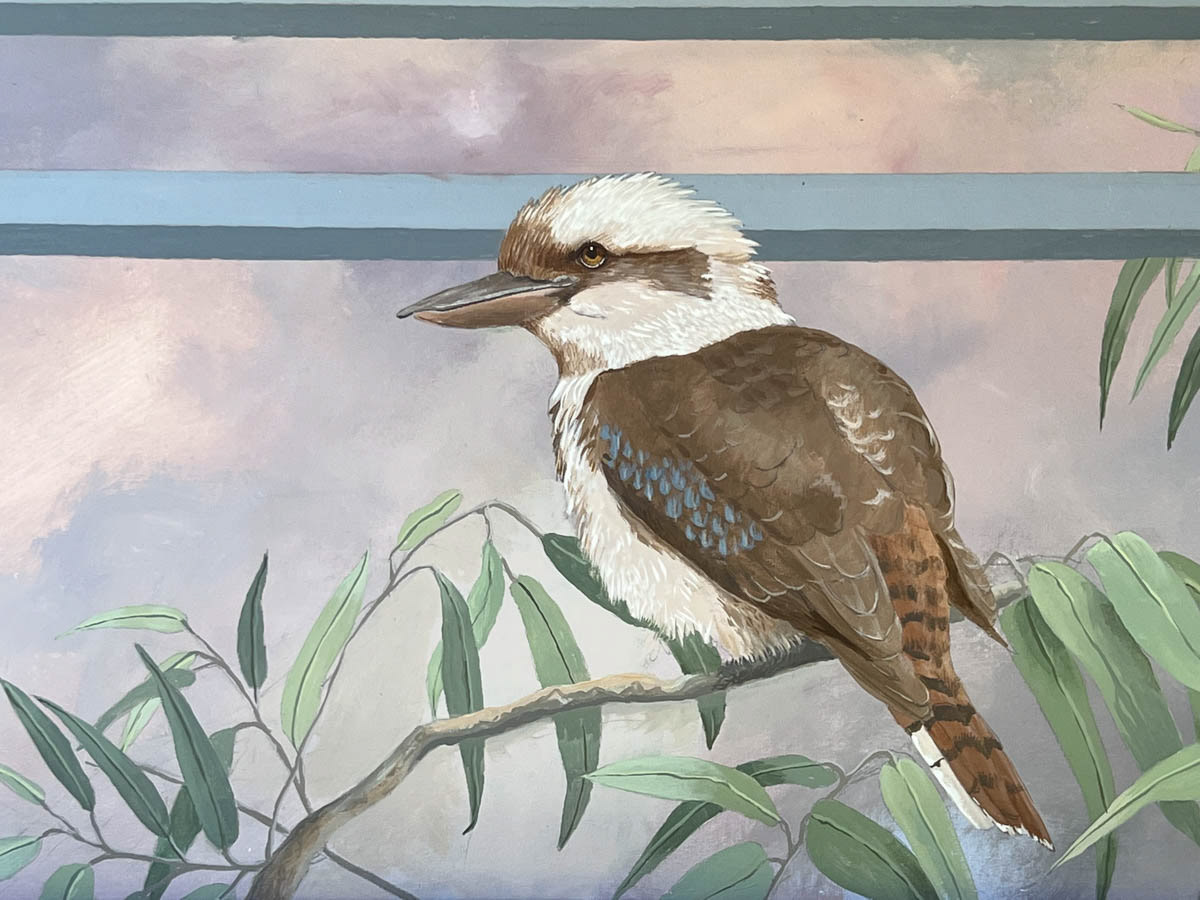
Kookaburra

A corner in the panoramic mural
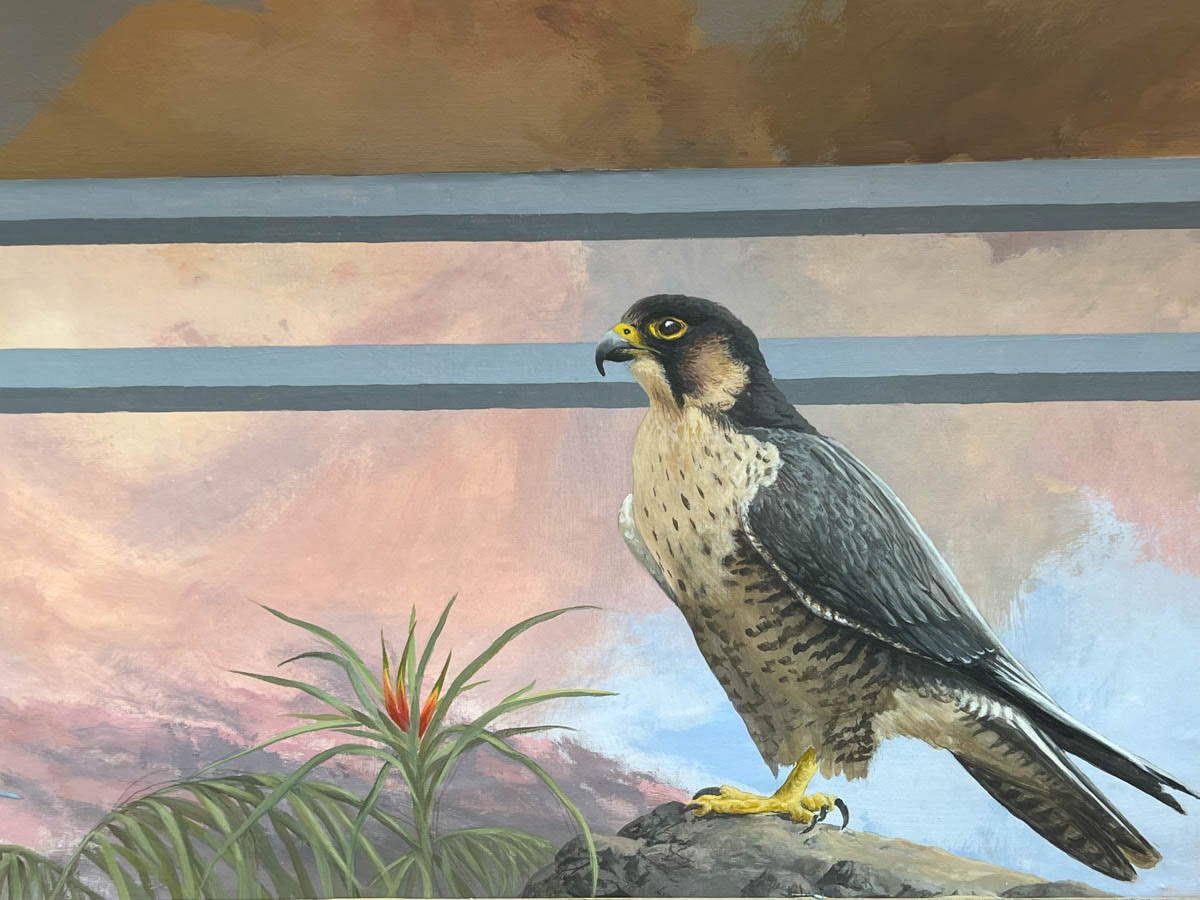
Pelegrin Falcon (Falco peregrinus)
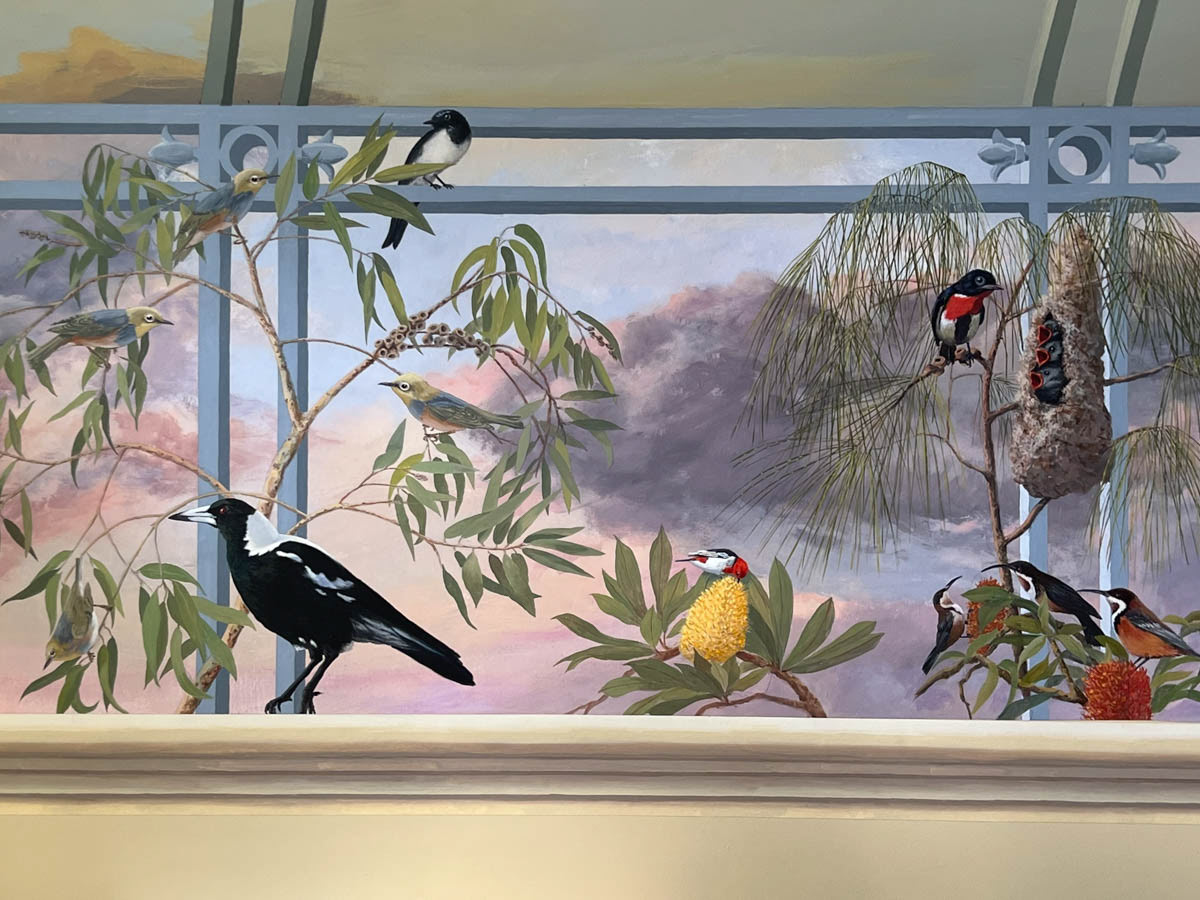
The false moulding (painted) has been put in place
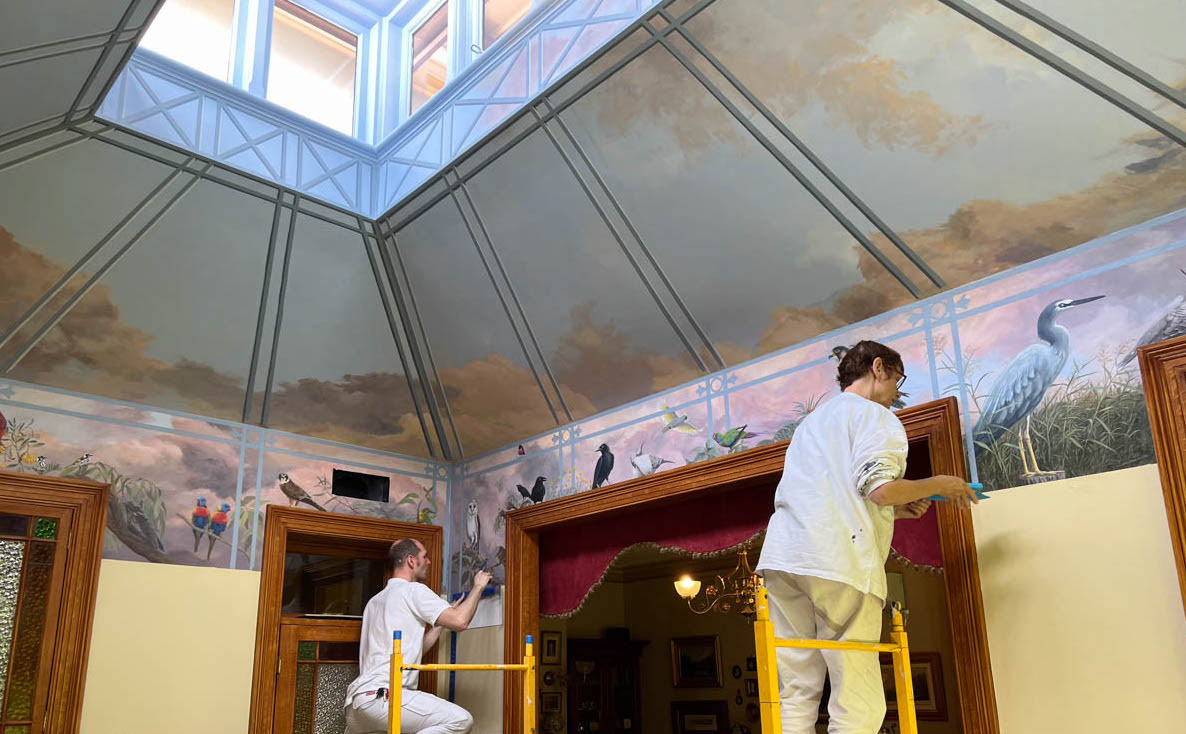
Félix and Jenny hanging the mural
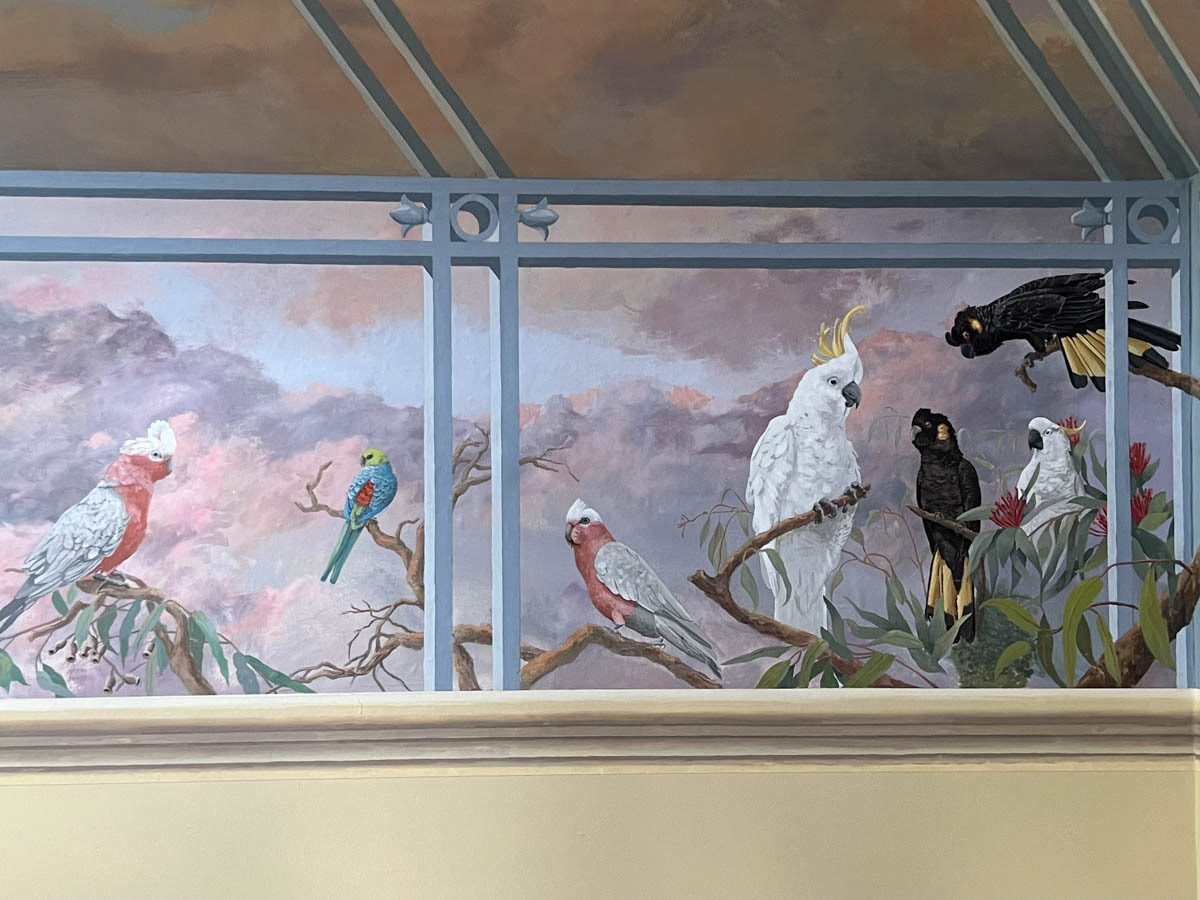
Galah (Eolophus roseicapilla),
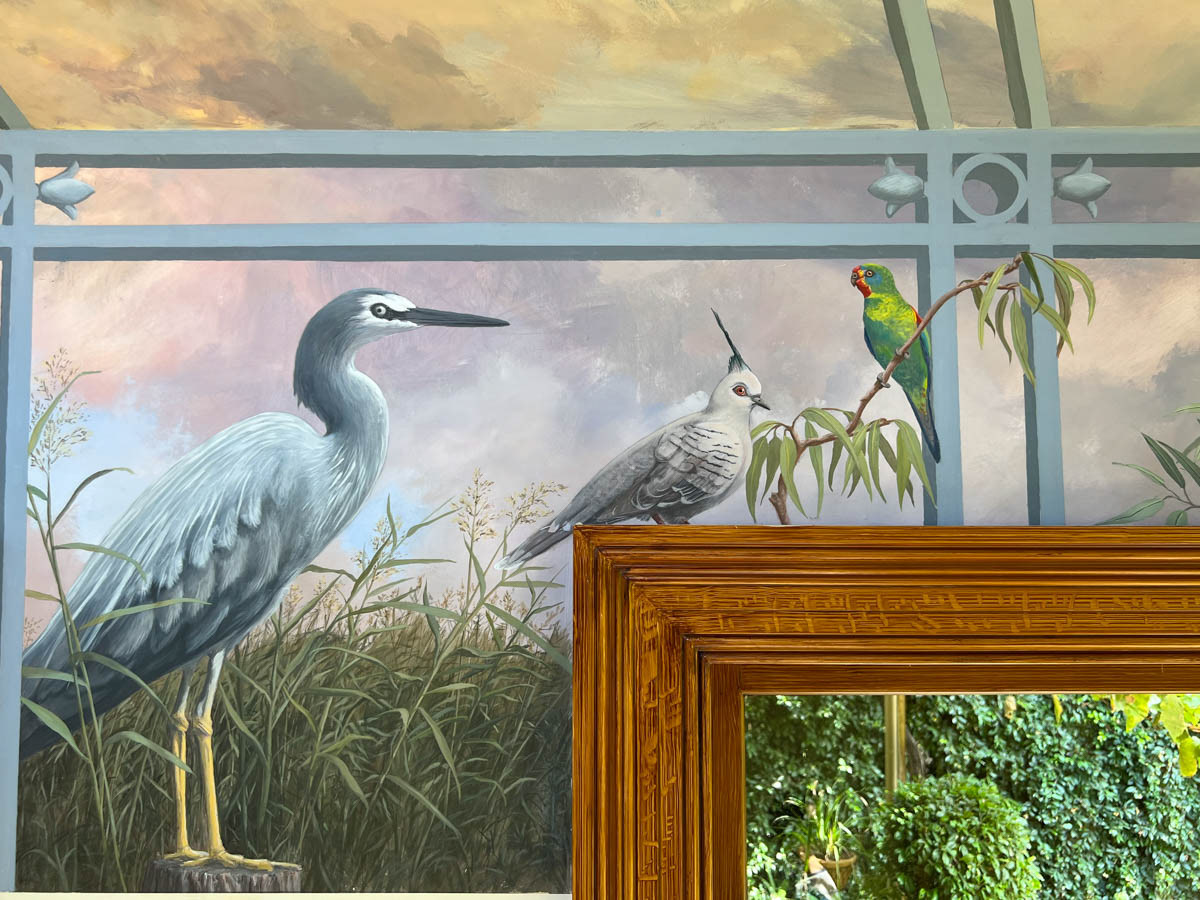
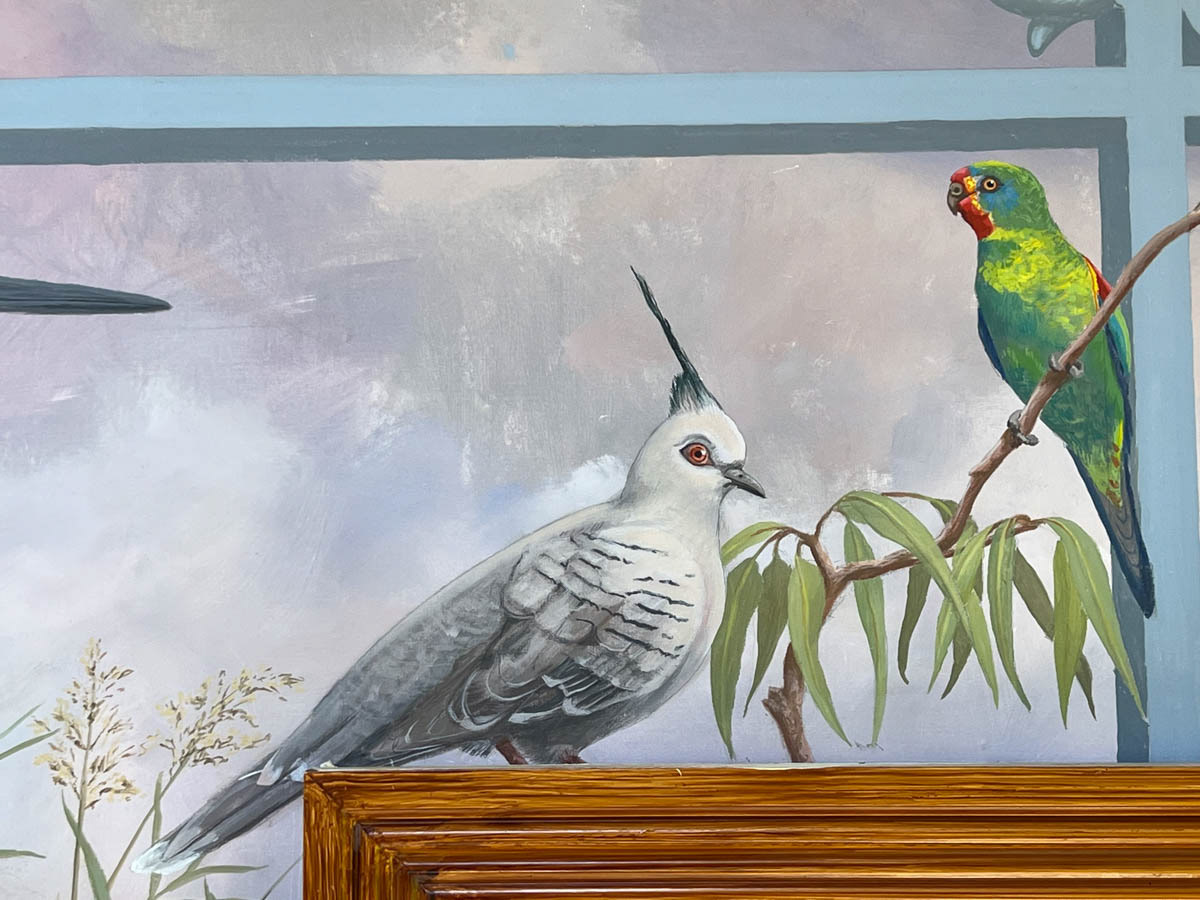
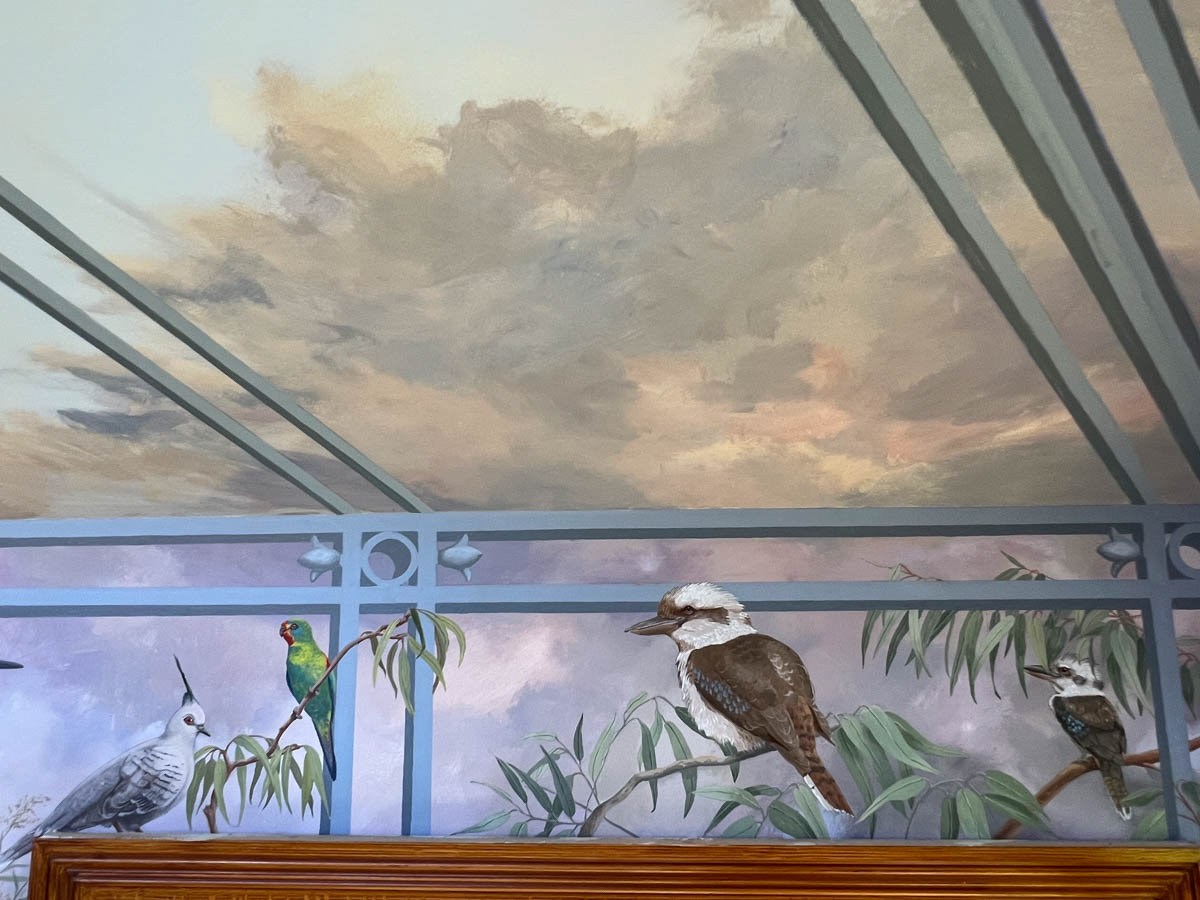
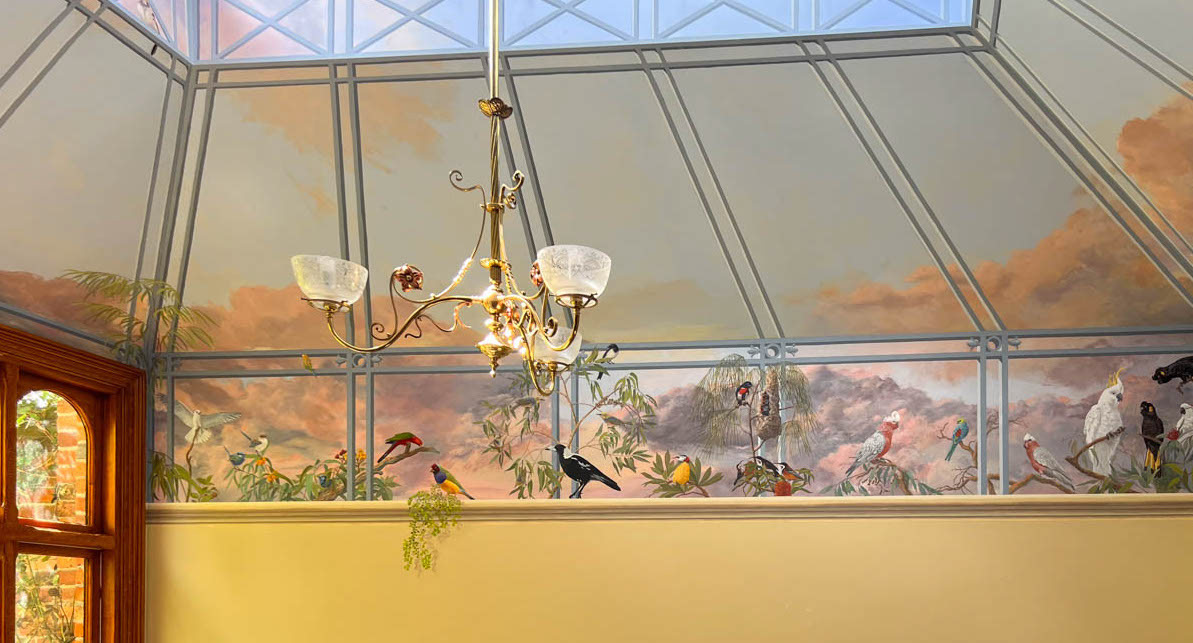
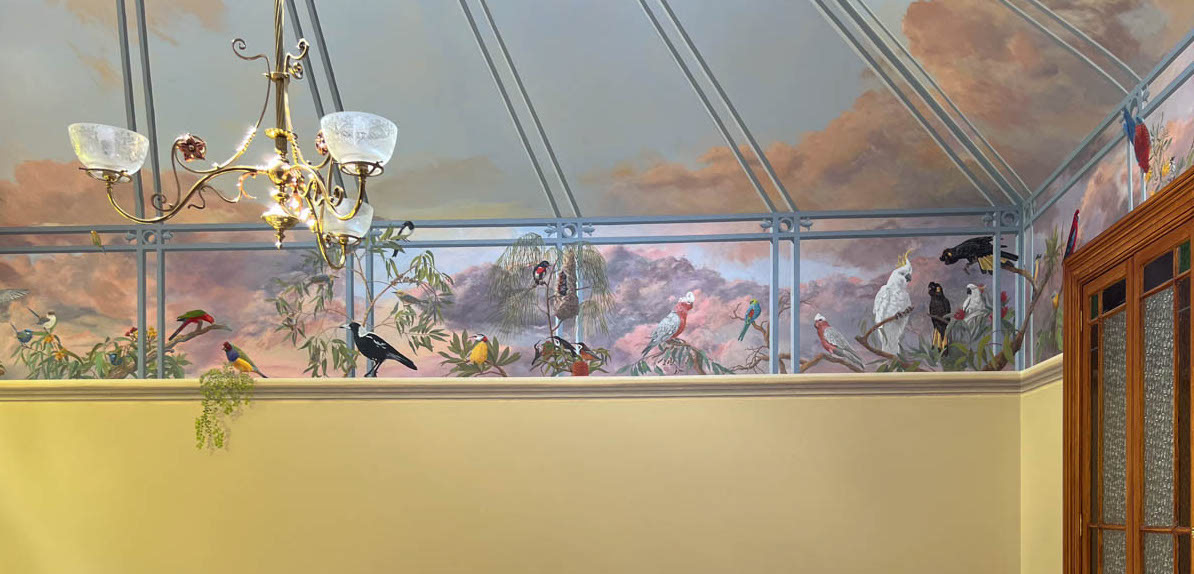
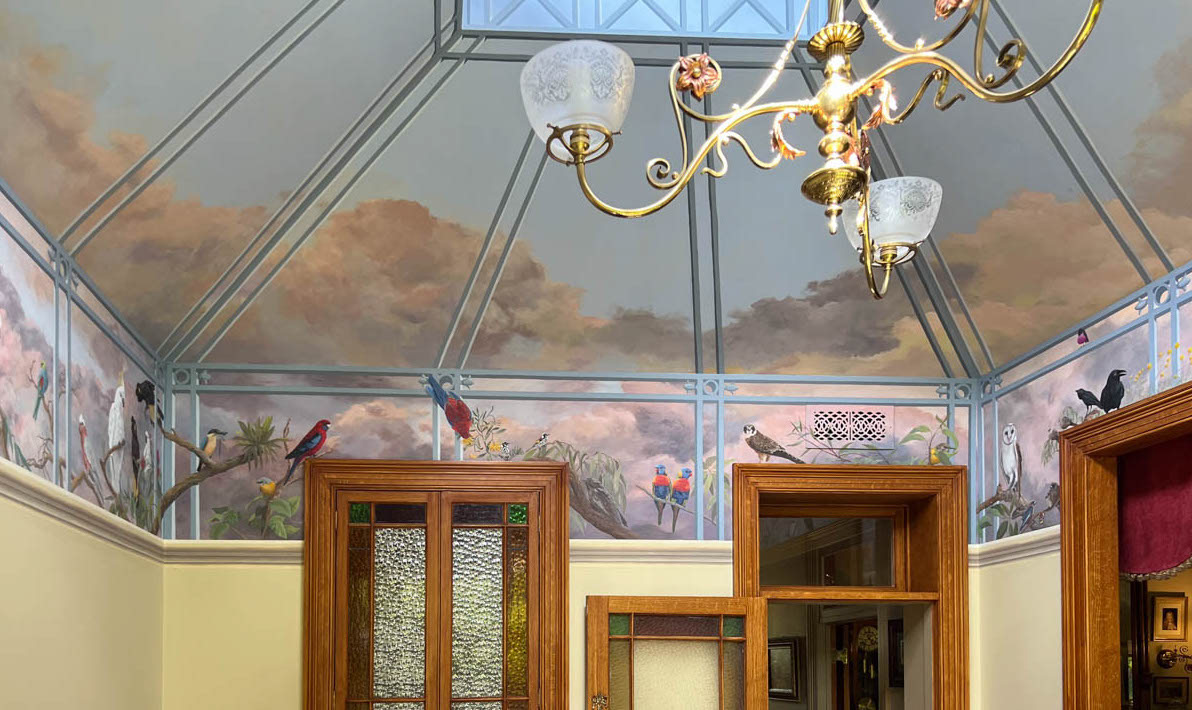
This work was largely influenced by the works of John and Elizabeth Gould first figures in Australian ornithology
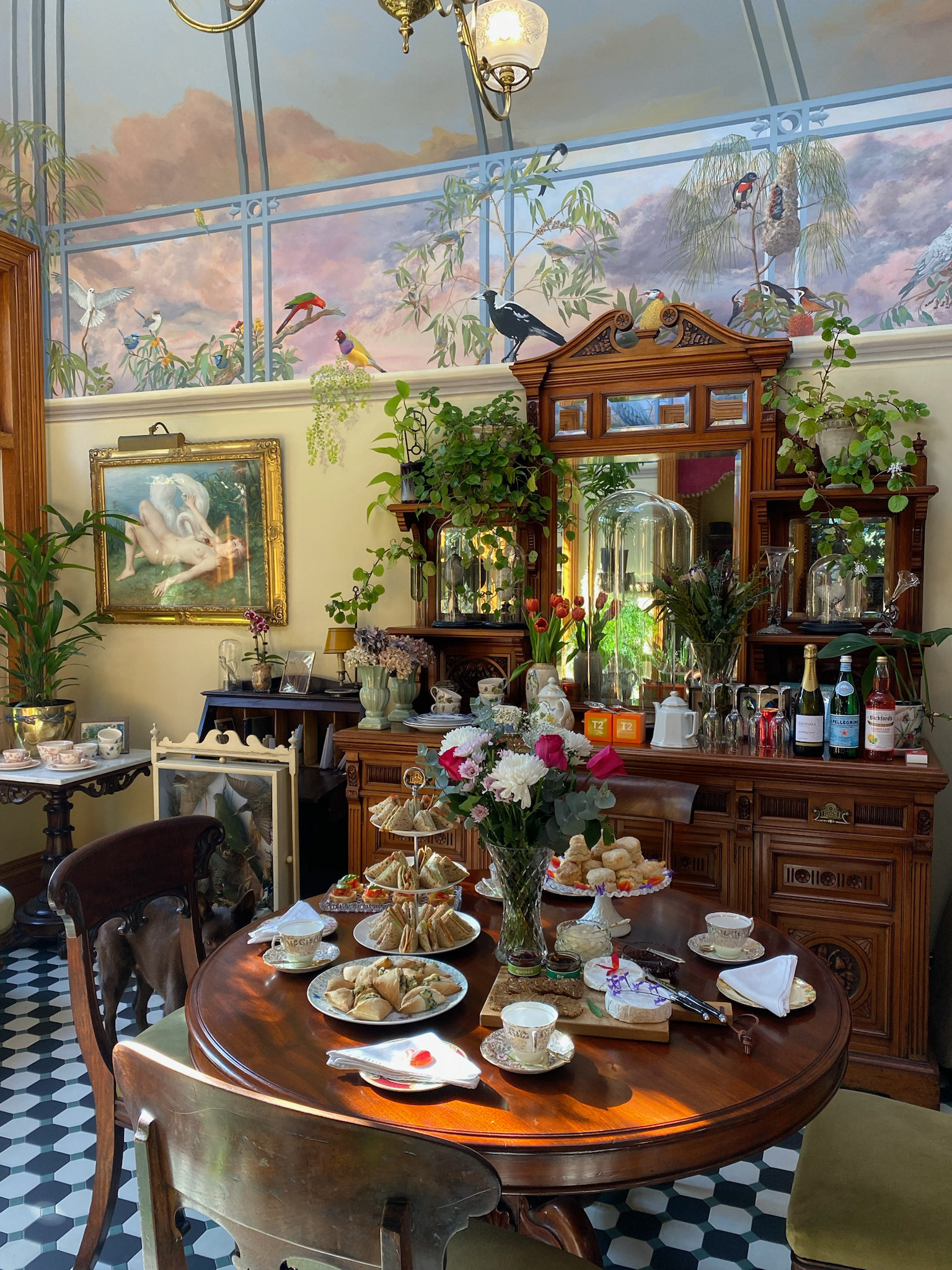
All photos © Dominique Antony
About John Gould, The Birds of Australia published in seven volumes between 1840 and 1848 is available in digital form